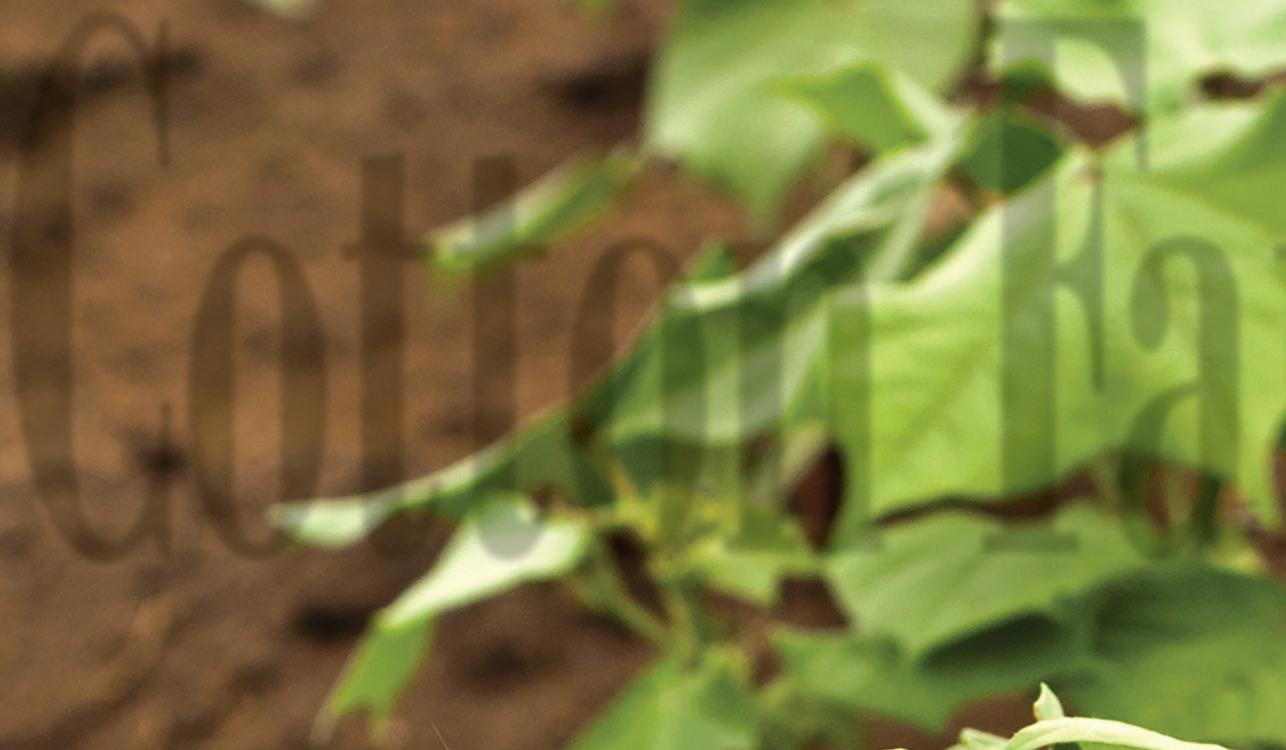
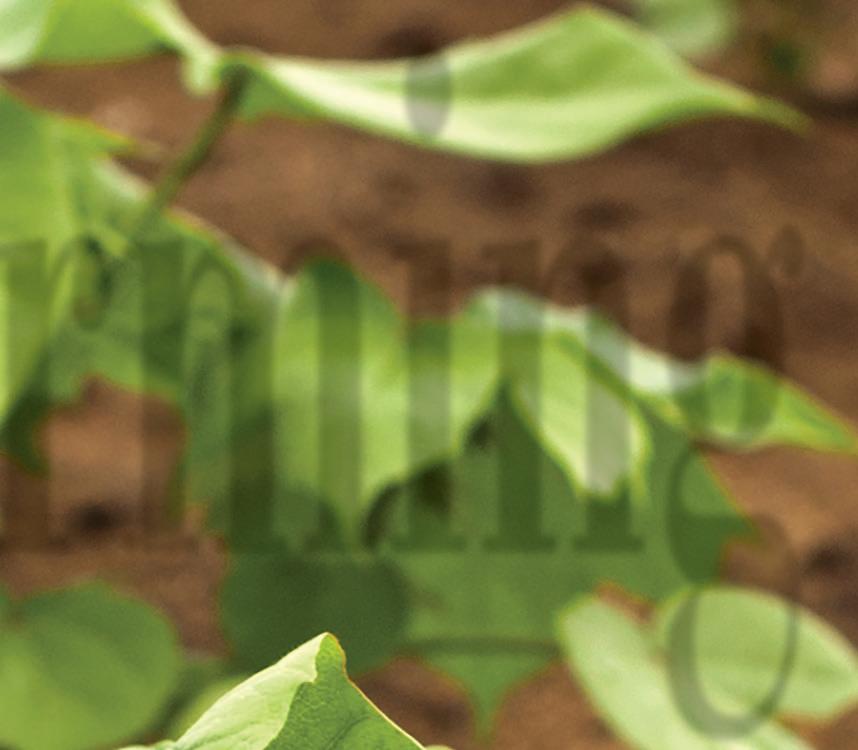
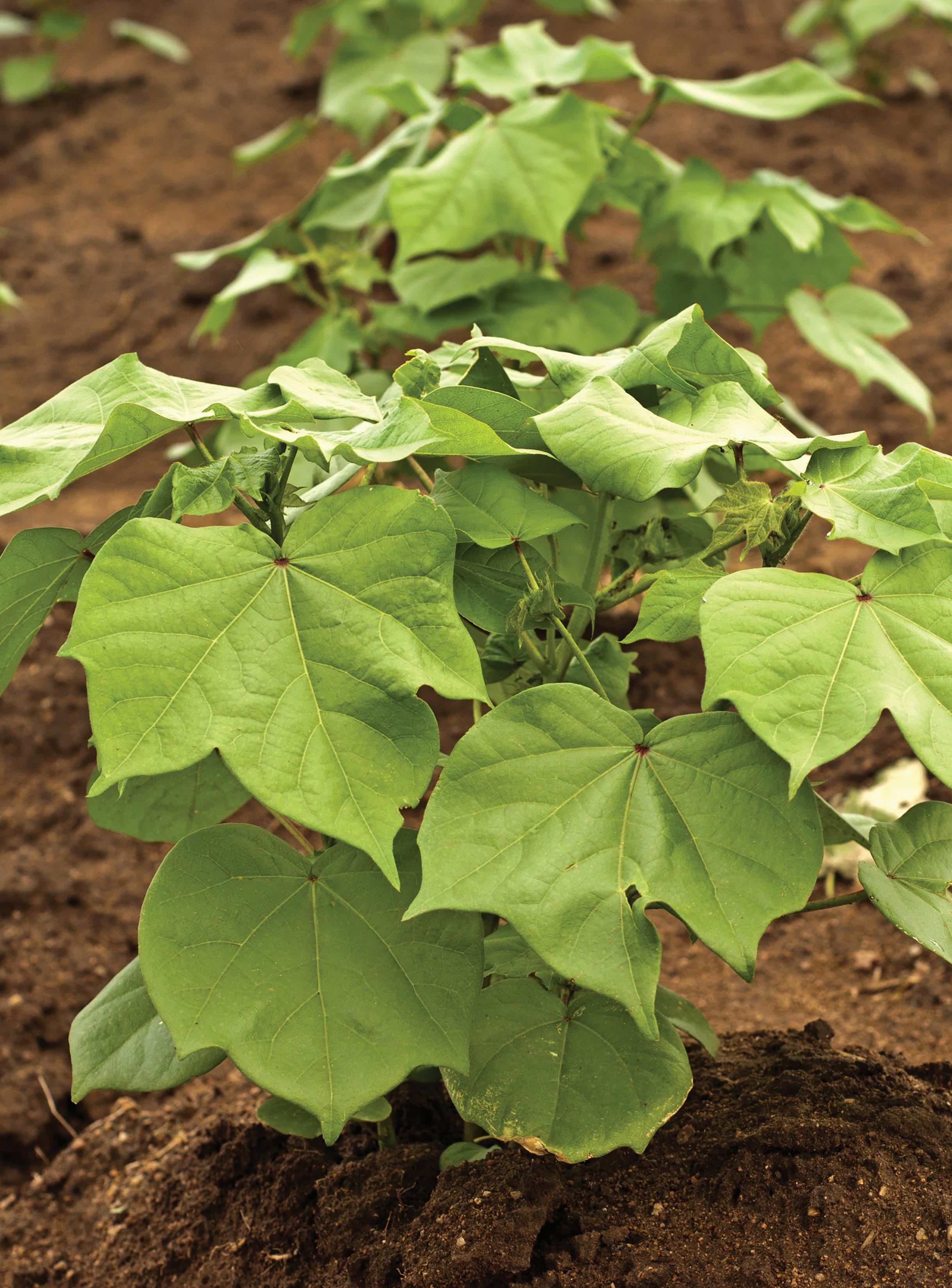




PROFITABLE PRODUCTION STRATEGIES www.cottonfarming.com ONE GROWER PUBLISHING, LLC MAY 2024 Planter Prep Georgia Cotton Experts Offer Tips To Promote Peak Performance Right Land, Right Team Establish ‘Field Of Dreams’ Celebrating Arizona Soil And Climate
The Cotton Research and Promotion Program's ongoing goal is to develop, fund and implement research and promotion designed to strengthen Upland cotton’s competitive position and to maintain and expand domestic and foreign markets and uses for cotton. At the farm level, the Cotton Research and Promotion Program is dedicated to agricultural research aimed at helping Upland cotton producers increase yields and improve profitability. At the fiber level, the Cotton Research & Promotion Program is working to increase the demand for cotton and cotton products worldwide.


YOU GROW THE COTTON YOU GROW THE COTTON THE COTTON RESEARCH AND PROMOTION THE COTTON RESEARCH AND PROMOTION PROGRAM HELPS GROW THE VALUE. PROGRAM HELPS GROW THE VALUE. LEARN MORE AT: WWW.COTTONBOARD.ORG

University of Georgia cotton experts say planter malfunctions in the field or mistakes at planting are common and can become costly, especially with the high seed prices. Therefore, it is important to ensure that planters are dialed in for peak performance in the field. As planting season gets underway, they offer key points to consider related to planter setup and performing in-field checks when planting cotton.
6 ‘FIELD OF DREAMS’
Texas A&M AgriLife and the Southern Rolling Plains Cotton Growers Association team up to create an agricultural research “ eld of dreams.”
12 WEED MANAGEMENT
Finding the right timing when it comes to cotton weed management can be tricky. Here are some considerations for Mid-South programs.
13 ARIZONA SOIL, CLIMATE
Dr. Je rey Silvertooth, former Arizona cotton specialist and University of Arizona professor, shares his expert perspective on the state’s soil and climate.
20 GINNERS MARKETPLACE
the official publication of the ginning industry NCGA chooses new leader, paper PBI hang tags to be phased out, TCGA/Texas Tech scholarship fund and California ranks high in worker safety.
Two years ago, the Auburn University Water Resources Center, Alabama Extension and the Alabama State Climate O ice saw a need to work together to improve drought communications and drought agricultural impact monitoring in Alabama. See how the statewide drought program works and learn what you can do to help and stay up to date on drought conditions. Go to www.cottonfarming.com for this Web Exclusive report.



INSTAGRAM: @COTTONFARMINGMAGAZINE MAY 2024 COTTON FARMING 3 Planter Prep Vol. 68 No. 5 MAY 2024 PROFITABLE PRODUCTION STRATEGIES www.cottonfarming.com DIGITAL OFFERINGS Keep up with the latest from Cotton Farming by signing up for the monthly E-News at www.cottonfarming.com . Look for the sign-up box in the upper right corner of the home page. Facebook: https://www.facebook.com/cottonfarming X: @CottonFarming Instagram: @CottonFarmingMagazine COTTON FARMING (ISSN 0746-8385) is published monthly January through December by One Grower Publishing LLC, 875 W. Poplar Ave., Suite 23, Box 305, Collierville, TN 38017. Periodicals postage paid at Memphis, Tennessee, and at additional mailing o ices. POSTMASTER: Send address changes to Omeda Communications, Customer Service Department, P.O. Box 1388, Northbrook, IL 60065-1388 (Phone: 847-559-7578) (Fax: 847-564-9453). Annual subscriptions are $40. International rates are $55 in Canada/Mexico, $90 in all other countries for air-speeded delivery. Surface delivery not available due to problems in reliability. ON THE COVER: Following proper planting techniques typically results in a good stand of healthy young cotton plants. Cover photo by Catherine Eckert/Dreamstime.
8 4 Editor’s Note 5 Cotton’s Agenda 11 Industry News 14 Southern Plains Report 17 Specialists Speaking 22 My Turn
WEB
EXCLUSIVE
DEPARTMENTS
FEATURES
& COLUMNS
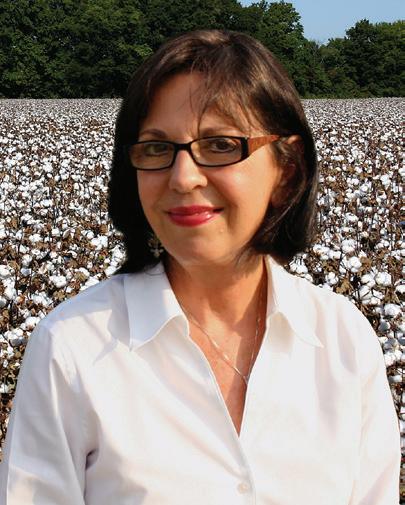
Editor’s Note
Carroll Smith
Cotton-Growing Game Plan
Growing a cotton crop, much like preparing for a big game in sports, requires having a well thought out game plan to achieve a successful outcome. As the King said in Lewis Carroll’s Alice in Wonderland, the best way to get started is to “begin at the beginning.”
The vast majority of cotton farmers began by purchasing their cottonseed, and the logical next step is to get it into the ground. In the cover story on page 8, University of Georgia cotton experts — Wes Porter and Simer Virk — offer tips to optimize planter efficiency. They point out that “Planter malfunctions in the field or mistakes at planting are common and can become costly, especially with the high seed prices. Therefore, it is important to ensure that the planters are dialed in for peak performance in the field.”
Their first piece of advice is to thoroughly go over different planter components to check if any parts need replacement or adjustment to get it field ready. “Once out in the field, it is important that the operator gets out of the tractor during the first few passes and checks seed depth and spacing across all rows behind the planter,” they said. “This is also the best time to check if the planter is set up and functioning properly for the given field conditions such as soil moisture, residue, etc.”
Virk also contributes a 12-point checklist to ensure you get the most out of your planter. Some of the components he covers include the drive system, double disc openers, row cleaners, downforce and more.
As the blueprint for efficient planting takes shape, another strategy to work out in advance is pest control. Some good advice on this front comes from the Specialists Speaking section on page 17.
Guy Collins, North Carolina cotton specialist, said, “Beyond stand establishment, early season weeds and insect pests are likely the next in line in terms of where our attention will be given. Using the NCSU Thrips Infestation Predictor (https://products.climate.ncsu.edu/ag/cottontip/) can certainly help growers understand when to plant to minimize thrips problems, when during the planting window they will get the most benefit from ThryvOn or which fields may need more attention and management for thrips.”
In the weed control arena, Texas cotton specialist Ben McKnight said, “As a weed scientist by training, I am a big advocate for an aggressive weed management approach on the front end of the season. Residual herbicides can provide a foundation for effective weed control throughout the critical weed-free period early in the growing season, thereby reducing potential yield loss from early season weed competition.”
As all the moving parts fall into place, and you tuck your well thought out cotton-growing game plan in your back pocket, remember that execution is a team effort, not a solitary endeavor. Or as Eric Bell, the 2023 Cotton Consultant of the Year, would say: “It takes a village.”
Here’s hoping everyone’s 2024 cotton season is a big winner!
If you have comments, please send them to: Cotton Farming Magazine, 7201 Eastern Ave., Germantown, TN 38138.
EDITORIAL/PRODUCTION
Editor Carroll Smith csmith@onegrower.com
Southeast Editor Amanda Huber ahuber@onegrower.com
Associate Editor Cassidy Nemec cnemec@onegrower.com
Digital Content Editor Katie Guthrie
Art Director Ashley Kumpe
ADMINISTRATION
Publisher/Vice President Lia Guthrie (901) 497-3689 lguthrie@onegrower.com
Associate Publisher/Editor-In-Chief Carroll Smith (901) 326-4443
Associate Publisher/Sales Scott Emerson (386) 462-1532 semerson@onegrower.com
Production Manager David Boyd dboyd@onegrower.com
Audience Services
Kate Thomas (847) 559-7514
For subscription changes or change of address, call (847) 559-7578 or email cottonfarming@omeda.com
EDITORIAL ADVISORY BOARD
David Burns – North Carolina
David Lynch – South Carolina
Bob McLendon – Georgia
Larkin Martin – Alabama
Mike Sturdivant Jr. – Mississippi
Charles Parker – Missouri
Jimmy Hargett – Tennessee Allen Helms – Arkansas
Jay Hardwick – Louisiana
Ronnie Hopper – Texas
Ron Rayner – Arizona
John Pucheu – California
ONE GROWER PUBLISHING, LLC
Mike Lamensdorf President/treasurer Lia Guthrie Publisher/Vice President
ACKNOWLEDGEMENT OF COOPERATION: Cooperating with COTTON FARMING are various cotton producer organizations across the Cotton Belt. Many representatives of producer organizations serve on COTTON FARMING’s editorial advisory board. Opinions expressed and conclusions reached by contributors are not necessarily those of the cooperating organizations or the editors. All statements, including product claims, are those of the person or organization making the statement or claim. The publisher does not adopt any such statement or claims as its own and any such statement or claim does not necessarily reflect the opinion of the publisher.
Copyright 2024 ©
ASSOCIATED PUBLICATIONS – One Grower Publishing, LLC also publishes RICE FARMING, THE PEANUT GROWER, SOYBEAN SOUTH and CORN SOUTH.
One Grower Publishing, LLC
875 W. Poplar Ave., Suite 23, Box 305 Collierville, TN 38017
4 COTTON FARMING MAY 2024 COTTONFARMING.COM
Carroll

Cotton’s Agenda
Gary Adams

Strategic Support For Industry Success
The National Cotton Council has conveyed its FY25 agricultural appropriations request for several programs critical to the success of the U.S. cotton industry.
What are the major recommendations?
■ Our request to House and Senate appropriations committee’s agriculture subcommittees seeks funding across USDA’s Agricultural Marketing Service (AMS), Animal and Plant Health Inspection Service (APHIS), Agricultural Research Service (ARS), Foreign Agricultural Service (FAS), and Farm Service Agency (FSA).
The FAS is vital for international market development and trade-enhancing functions, and the NCC is requesting adequate funding to ensure they are adequately staffed to conduct these important functions. The NCC also seeks $200 million to fund the Market Access Program and $34.5 million for the Foreign Market Development Program, both of which support the activities of Cotton Council

International whose mission is to maintain and expand the U.S. raw cotton and cotton product exports. The NCC also asked for $4 million in funding to help AMS upgrade its cotton classing offices — laboratories essential to maintaining U.S. cotton’s fiber quality/reliability reputation.
The NCC also seeks 1) $15.73 million for the APHIS’s Cotton Pest Account to ensure active boll weevil eradication efforts in the National Buffer Zone remain funded and 2) sufficient funding for the FSA to make up to $30 million in loans to eligible producer-controlled organizations conducting Boll
Weevil Eradication Program efforts. Regarding other pest-related funding requests, the NCC is urging 1) level funding for Cotton Blue Disease research and suggests renaming the account to Exotic Pathogens of Cotton to encompass other diseases that threaten U.S. cotton and 2) $2 million (a $1 million increase) for research aimed at controlling the Cotton Seed Bug. The NCC has conservatively estimated potential damages of $84 million annually in the westernmost cotton-producing states (CA, AZ, and NM) should the Cotton Seed Bug not be controlled and eradicated. The NCC has suggested that the $1 million increase in funds be divided between research programs at the University of Florida and the University of California to take advantage of shared resources, collaboration, and past experiences to produce results efficiently.
Any other research support being sought?
The NCC seeks a $1.8 million increase to ensure the preservation of the National Cotton Germplasm Collection and an additional $3 million for critical building renovations to protect the integrity of the National Collection. With no increase in funding since 2002, the National Cotton Germplasm Collection is in dire need of additional support to continue its operation. The Collection houses seed stock that has allowed researchers and breeders to identify genetic traits that are resistant to FOV4, bacterial blight, and reniform nematode. The NCC also seeks a $1.6 million increase for improvements to CottonGen, a central genetic database that pairs with the National Cotton Germplasm Collection and improves efficiency of plant breeders and geneticists. Additional funding for personnel focused on the translation of genomic information has also been requested.
An additional $2 million has been requested for the three cotton ginning research units (Stoneville, MS, Lubbock, TX, and Mesilla Park, NM) to help address ongoing research needs for quality improvements, efficiencies at the gin, and the use of gin by-products to improve carbon capture and ultimately improve cotton’s overall sustainability.
Gary Adams is president/CEO of the National Cotton Council of America.
INSTAGRAM: @COTTONFARMINGMAGAZINE MAY 2024 COTTON FARMING 5
The NCC asked for $4 million in funding to help AMS upgrade its cotton classing offices.
The Southern Rolling Plains Cotton Growers Association is helping prepare the field for planting.
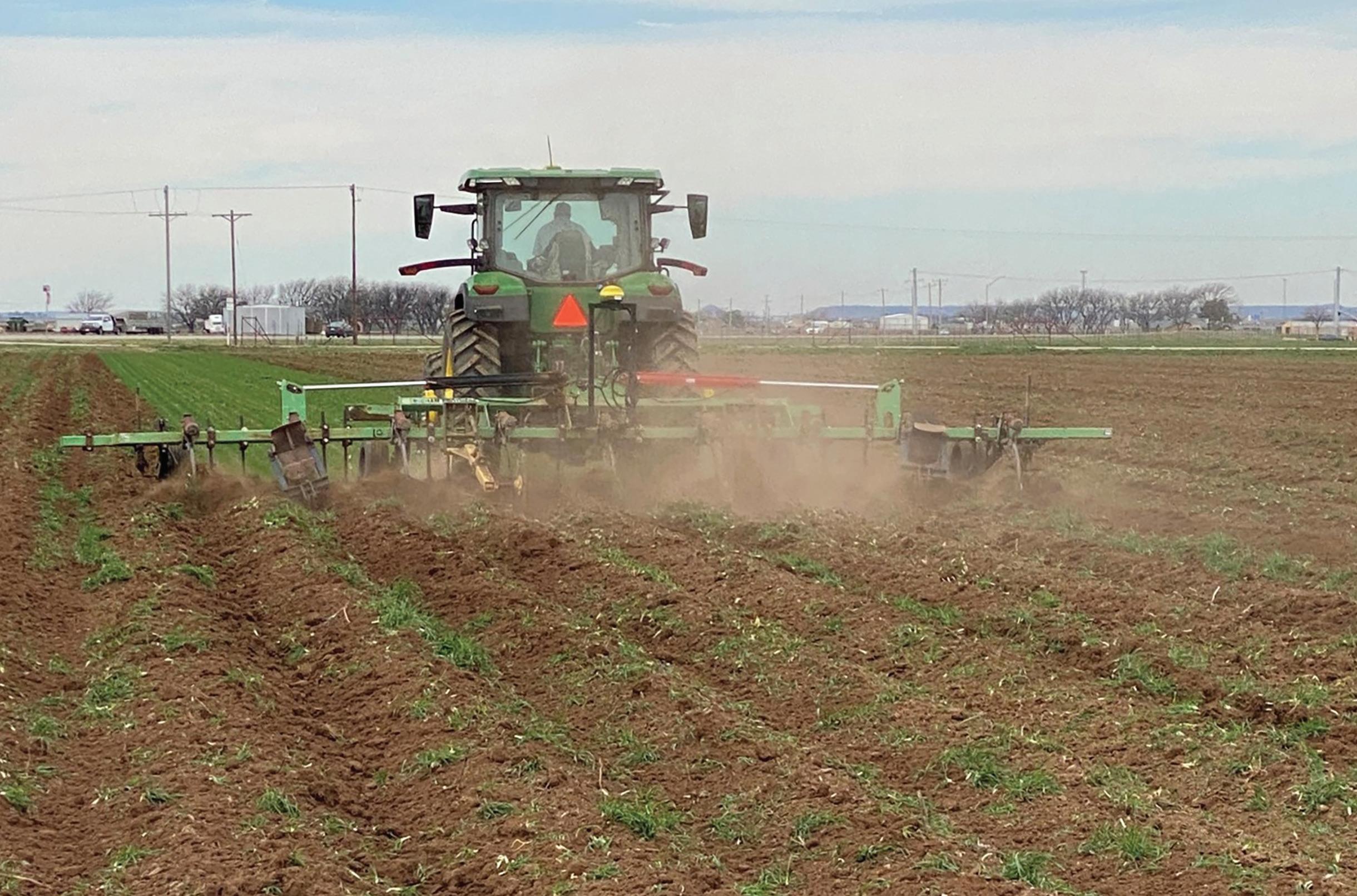
‘Field Of Dreams’
Texas A&M AgriLife, Southern Rolling Plains Cotton Growers Association Team Up
BY SUSAN HIMES TEXAS A&M AGRILIFE
An alignment of the right land and the right team in place is leading to creating an agricultural research “field of dreams.”
When agronomist Reagan Noland, Ph.D., took a position with the Texas A&M AgriLife Extension Service five years ago, one of the things that excited him most was the prospect of conducting field trials and being able to support the region’s cotton and crop producers.
The Texas A&M AgriLife Research and Extension Service Center in San Angelo had some land leased at the time, which Noland was thankful for, but it wasn’t ideal for his research and Extension goals. Several local producers also generously let him do small-scale trials in their fields, but this was logistically challenging for both him and the producers. It also limited the opportunities for public engagement and Extension programming.
“Cotton has been an economic driving force of this region for a very long time,” he said. “It is both a livelihood and a legacy
that we hope to maintain, and it was a priority for me to find ways through science to support and grow the industry.”
Noland kept searching for available land that would fit his criteria, but that was challenging in and around San Angelo. In the meantime, despite the topography, lack of irrigation and any number of other challenges, Noland worked with the land he had access to.
Active Farmer Association
The Southern Rolling Plains Cotton Growers Association, SRPCGA, has supported the research done by Texas A&M AgriLife in San Angelo since its inception. Noland began working closely with them when he first started. They understood the importance of his research and the larger-scale and more complex studies he could do if he just had the land for it.
The SRPCGA, consisting of cotton producers and ginners within the Concho Valley area, became partners with Noland in the search for the “perfect field.”
6 COTTON FARMING MAY 2024 COTTONFARMING.COM
SUSAN HIMES/TEXAS A&M AGRILIFE
“We understood how important it was for the type of work Dr. Noland was doing on crops to secure land where he could control more of the variables and conduct studies and comparisons over many years,” said Bill Thompson, executive director of SRPCGA and retired AgriLife Extension economist, San Angelo.
Perfect Partnership
Three years after joining the San Angelo center, Noland got a new colleague in the office next door. Entomologist Greg Wilson filled the center’s vacant integrated pest management position and before long, he, too, was dreaming of acreage where they could conduct larger-scale field trials and research.
Noland said he had gotten his hopes up many times before only to have potential fields “just not work out.” Now it was also Wilson sharing these hopes and disappointments.
“We came close a couple times, but it just didn’t work out,” Wilson said. “Finding a long-term lease on farmland that not only fit our criteria but was also in a centralized location was starting to feel like an impossible task.”
But then, one day last year, Thompson heard about some farmland about to become available. It was in Wall, about 10 minutes from San Angelo. The land belonged to the Wall Independent School District and consisted of 34 acres, which had previously been used to farm row crops.
The SRPCGA was ultimately able to lease the land for Texas A&M AgriLife use for the next 10 years.
“Everything finally aligned for us,” Noland said. “Greg and I had talked about what the land we needed would be like in a ‘perfect world.’ We talked about flat ground with irrigation and around 30-40 acres in a location that was convenient and accessible to producers who came to see our trials and attend field days. That is exactly what we got.”
The farmland will also allow for studies on other row crops.
“Nobody we work with is only a cotton farmer; every single one of them also grows grain crops, hay or something else,” Noland said. “Our cotton research is key, but research on other crops like wheat and sorghum is also very important to our producers and the region.”
He also said it is incredible to have complete control over a piece of land to conduct good, consistent research covering a range of different issues, factors and management inputs.
“Having this land to work on — I really do feel like the luckiest Extension specialist in the nation,” Wilson said. “The Southern Rolling Plains Cotton Growers have been amazing in making this happen.”
Dream Becomes Reality
One morning two months ago, Noland and Wilson stood on the newly leased farmland beaming as if it was Christmas morning. A nearby cotton producer and SRPCGA Board member had volunteered his time and equipment to help till the rows. As the heavy machine rolled onto the field, their excitement was palpable.
The men, alongside their team, removed and replaced field markers in coordination with the equipment’s progress and discussed what all they hoped to do with the land they now had to work with.
Noland said the vision for the acreage is a checkerboard of plots of different crops and treatments all the way across the farm.
“Ultimately we’ll have integrated projects studying crop rotation, tillage regimes, fertility, reniform nematodes and so much

more,” Wilson said. Reniform nematodes affect cotton production in the region and can significantly limit yield.
Noland said inputs and technologies are changing constantly — as are the problems farmers face.
“Our research is about being efficient with inputs, mindful of the environment, economically resilient and productive for our community,” Noland said. “This farm allows us to continue that mission.”
Pest and weed issues are rapidly developing and evolving, he said, so producers can’t just keep farming the same way.
“We have to adapt,” Noland said. “We have to evaluate carefully exactly what our inputs are and how to optimize the system.”
Community Focused
In addition to their cotton and row crop research, Wilson envisions the farmland as a prime opportunity for the community.
“I’ve already discussed with the Texas Master Gardeners the idea of having a garden section where they can grow tomatoes, black-eyed peas and other vegetables and plants,” Wilson said.
Wilson said a community garden would also be an opportunity to teach others about agriculture. He said part of the acreage will be intentionally open to the public as a demonstration space.
Wilson and Noland would like a covered pavilion someday where producers could gather for field days, and the public could meet for agricultural education programs. They don’t want to get ahead of themselves, but they both have big plans for helping producers and benefiting their entire community. After all, dreams do come true.
Susan Himes is a writer and media relations specialist for Texas A&M AgriLife.
INSTAGRAM: @COTTONFARMINGMAGAZINE MAY 2024 COTTON FARMING 7
SUSAN HIMES/TEXAS A&M AGRILIFE
Reagan Noland adjusts row markers prior to the first tilling in the “field of dreams.”

Take the time to check planted seed depth for each row-unit and make necessary adjustments accordingly.
Peak Performance Planting
Georgia Cotton Experts Offer Tips To Optimize Planter Efficiency
BY WES PORTER AND SIMER VIRK UNIVERSITY OF GEORGIA
Editor’s Note: To achieve a healthy stand of cotton, it’s important to properly prepare your planter. Drs. Wes Porter and Simer Virk, precision ag specialists and members of the University of Georgia Cotton Team, advise closely checking your equipment and performing any required maintenance to ensure it is ready for planting cotton.
While some planters may have already been used to plant corn, it’s important to note some significant changes in planter settings are required to ensure accurate metering and seed placement for cotton. Planter malfunctions in the field or mistakes at planting are common and can become costly, especially with the high seed prices. Therefore, it is important to ensure that the planters are dialed in for peak performance in the field. A planter checklist is available at rb.gy/wgi3xz for growers to use and thoroughly go over different planter components
to check if any parts need replacement or adjustment to get it field ready. Once out in the field, it is important that the operator gets out of the tractor during the first few passes and checks seed depth and spacing across all rows behind the planter. This is also the best time to check if the planter is set up and functioning properly for the given field conditions such as soil moisture, residue, etc. Here are a few other key points to consider related to planter setup and performing in-field checks when planting cotton:
Seed Depth
The recommended seed depth for planting cotton is 0.5 to 1 inches. If the same planter has been used for planting corn, it is most likely set closer to 1.5 to 2 inches deep. Verify seed depth before planting on both a hard surface and in the field. Mechanical seed depth settings (T-bar handle adjustments) can vary among the row-units on the same planter so take
8 COTTON FARMING MAY 2024 COTTONFARMING.COM
COVER STORY
UNIVERSITY OF GEORGIA
COURTESY
the time to check planted seed depth for each row unit and make necessary adjustments accordingly. This is very important especially when planting cotton at shallower depths (<0.5 inch) as even a small deviation from targetdepth setting on some row units can result in seeds being placed on top of the ground instead of in the soil and with proper seed-to-soil contact.
Downforce
Proper planter downforce is important to achieve targetseeding depth to make sure the downforce system (whether utilizing mechanical, pneumatic or an active hydraulic system) is set to apply adequate downforce on each row unit. For planting cotton, the required downforce could range anywhere from none (just the weight of the row-unit itself) up to 200 lbf depending on the soil type, moisture and field conditions at planting. Lighter sandy soils and conventional-tillage systems will require considerably less downforce than heavy loamy soils and conservation-tillage systems (strip-till or no-till.) Remember, it is common to have variable conditions within the same field, so make sure to adjust settings accordingly as field conditions change within the same field or when moving from one field to another.
Seeding Rate
The recommended seeding rate for cotton is at least 2 seeds per row-foot to attain a plant population of 1.5 to 1.75 plants per row-foot (again here the seed plate and plant population for corn are drastically different so adjust the population accordingly for cotton). For growers planting less than 2 seeds per row-foot, it is critical to avoid any seed metering and placement issues as it may result in inadequate seed establishment with a potential for seed loss. For growers who are not using a seed monitor during planting, it is highly recommended to check all seed meters on a test stand before planting to verify meter performance, especially singulation. Growers should check the availability of seed meter test stand with their nearest dealership as most equipment dealers have these available today and offer seed meter testing as a service. Seed meter testing is important as any unnecessary skips or multiples during planting will
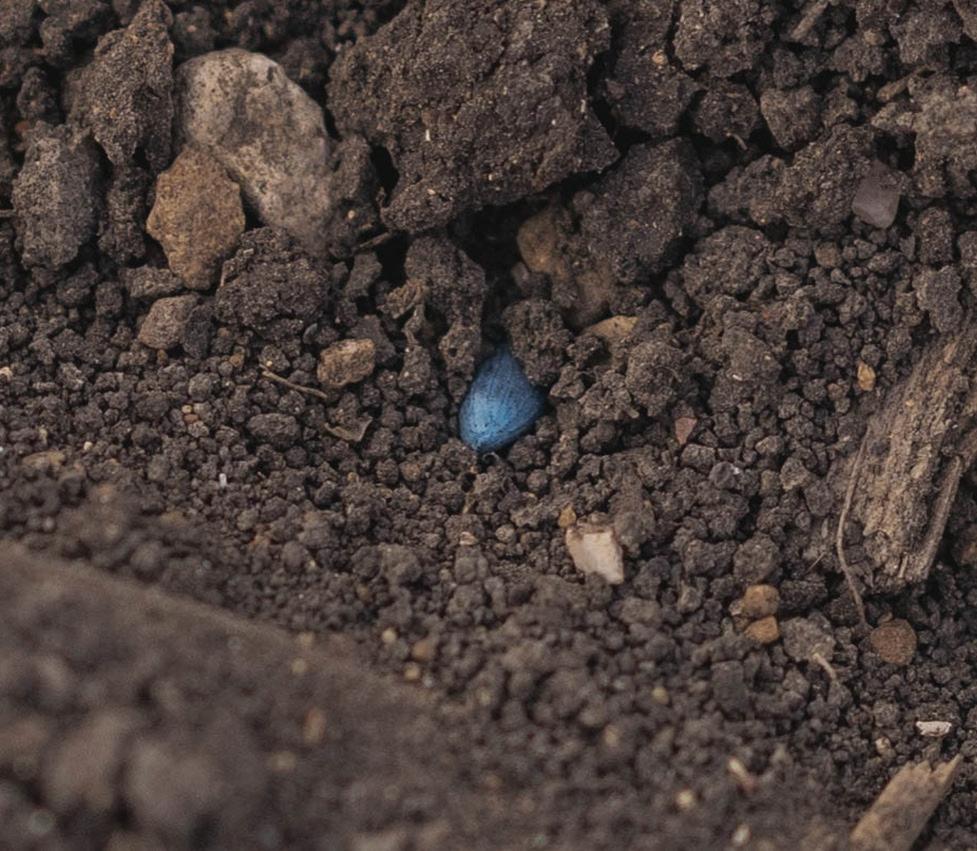
Check carefully for both good seed placement and seed-to-soil contact for timely and uniform emergence.
12-Point Checklist To Ensure Your Planter Is Dialed In For Peak Performance
☑ Parallel Linkages – Stand behind the row unit and wiggle it up and down and left and right to check for any play in the parallel arms and adjust or replace linkages and bushings to make sure row units are secured nice and tight on the planter.
☑ Drive System – Check all chains, idlers, sprockets and bushings, and replace any parts that are too worn. Make sure all drive chains are snug and do not have any unnecessary jump or vibration when operating. Lubricate all chains and sprockets before begin planting and regularly in the season. Additionally, check all drive system parts including flex drives, hydraulic drives and lines, and electrical drive systems including connectors and wires.
☑ Tire Pressure – Check and maintain proper air pressure in the tires as recommended by the manufacturer based on the weight of the planter and planting conditions in the field. Independent of drive system, improper tire pressure can have negative effects on seed placement due to improper levelling of the planter toolbar.
☑ Double Disc Openers – Check that the double disc openers are still sharp and within the diameter tolerance outlined by the manufacturer. Replace if they are dull or worn more than half an inch of their original diameter. Perform a quick check using a business card to ensure adequate contact (1.75 to 2 inches) between the disc openers at the 4 o’clock position.
☑ Gauge Wheels – Inspect the gauge wheels for any cracks or wear. Adjust the gauge wheels so that they run tight against the disc openers but just enough so they can easily be turned by hand with slight pressure. Gauge wheels should also move freely up and down without sticking in any position.
☑ Row Cleaners – Check row cleaners for any wear and replace any bearings if they are not turning freely. Floating type row cleaners should also travel up and down to effectively clear soil/crop residue out of the way.
☑ Seed Meters – Inspect each seed meter thoroughly for any wear or damaged parts including vacuum seals, brushes, scrapers and doubles eliminator. Ensure that the correct crop kit (for newer meters) is installed in the meter. If not utilizing a seed monitor (capable of by-row feedback) during planting, it is also recommended to run the seed meters on a test stand to check performance and make any necessary adjustments.
☑ Seed Tube – Check seed tubes for any cracks and wear at the bottom. Seed tubes should also be cleaned properly to clear any debris or obstructions (seed, cobweb, etc.). Make sure that the seed sensor is secured properly to the tube and working as intended.
☑ Closing Wheels – Check that closing wheels are centered directly over the center of the row. Inspect closing wheels for any wear or play in the arms and replace parts or adjust as needed.
☑ Vacuum – Inspect the whole vacuum system including hydraulic motor, fan and hoses for any wear, leaks or loose fittings. Check that vacuum hoses are attached properly to the manifold and to the seed meters on each row unit.
☑ Downforce – For mechanical (spring type) systems, check all the components thoroughly and make sure different downforce adjustments can be made easily. For pneumatic or hydraulic systems, inspect all air or hydraulic connections carefully and perform a static diagnostic test to verify that the downforce system is functioning properly. This includes the compressor for air systems, in some cases it stays in the cab and can be neglected.
☑ Technology – Check that the GPS receiver and planter display have the most recent firmware upgrades installed and are functioning properly. Check if the GPS correction subscription services and any other display unlocks for advanced planting features are activated and paid for the rest of the season. Perform a thorough inspection of all technology components including sensors, harnesses, ECUs and connections to ensure everything is connected and functioning properly. Also, make sure to back up planting data from the previous season on a computer or an external storage device before recording this year’s data. — Dr. Simer Virk
INSTAGRAM: @COTTONFARMINGMAGAZINE MAY 2024 COTTON FARMING 9
CASSIDY NEMEC

strong emergence and establishing a healthy stand starts with utilizing proper planting techniques.
result in poor or uneven stand establishment that can further impact yield if the stand is reduced significantly. Cotton seed being smaller than corn and peanut seed is also very sensitive to vacuum pressure. Make sure to adjust the vacuum appropriately to avoid skips and multiples.
Seed Placement and
Seed-to-Soil
Contact
Proper setup and functioning of row-cleaners (when planting in conservation systems), double disc openers, gaugewheels and closing wheels for prevalent field conditions is critical for attaining adequate seed placement and proper seed-to-soil contact. Make sure that the double-disc openers are creating a true V-shape furrow, gauge wheels are running tightly (but not rubbing excessively) against the opening discs, and closing wheels are aligned perfectly behind the planter and set to apply adequate pressure to properly close the furrow. Check for any signs of improper furrow formation when doing field checks behind the planter and make necessary adjustments. It is important to have both good seed placement and seed-to-soil contact for timely and uniform emergence.
Planting Technology
Several planting technologies are available today on modern cotton planters to improve seeding performance. Perform a thorough and timely inspection (at least a week or more) before planting to check status and functioning of all technology components including GPS, seed monitor, wiring harnesses, seed tube sensors, rate control module, electric seed meters and active downforce system (if available) as well as for any subscription or latest firmware updates for the GPS and the in-cab display. Back up your planting data from the previous
Planter malfunctions in the field or mistakes at planting are common and can become costly.
year before you begin planting this year and make sure the seeding prescriptions are ready to go if using any variable-rate seeding in your operation this year. Issues with planting technology in the middle of the planting season can cost significant time and money so make sure to address any issues before heading out to the field.
Variability During Planting
As mentioned above, both variable field and environmental conditions are unavoidable during planting. It is critical that growers evaluate their planting conditions day to day, field by field and especially if there are significant weather events (such as temperature changes or rainfall) during the planting window. These are common and will require adjustments to planter settings based on the existing in-field conditions, with special consideration to variability in soil texture, moisture and/or crop residue. Most growers usually plant two to three varieties on their farm. Any change in cotton varieties, specifically in seed size would also require adjustments to seed meter settings and vacuum to ensure good seed singulation with minimal skips or doubles.
Remember, you only get one chance to place the seed and close that furrow properly so consistent and regular checks during planting are important to ensure that the planter is operating at peak performance in each field and throughout the whole planting window.
10 COTTON FARMING | MAY 2024 COTTONFARMING.COM
CASSIDY NEMEC
Achieving
Fertilization Tool Digitizes Crop Nutrient Management
A national group of scientists has released the Fertilizer Recommendation Support Tool, or FRST, a decision aid providing an unbiased, science-based interpretation of soil test phosphorus and potassium values for fertilization.
The FRST project is a collaboration of more than 100 soil science and agronomic professionals representing nearly 50 universities, four divisions of the U.S. Department of Agriculture, several nonprofit organizations and one private sector partner. This diverse partnership shows the collective effort and expertise invested in the development of FRST.
The new web-based tool, available at soiltestfrst.org, represents a significant advancement in soil testing for phosphorus and potassium and nutrient management. It uses data from across the United States with the potential to save farmers millions of dollars annually while reducing excess nutrient losses to the environment.
FRST provides critical phosphorus and potassium soil test values, indicating
Industry News
where there is no expected yield increase from phosphorus or potassium fertilizer application. In the next phase, FRST will provide research-based phosphorus or potassium rate response information to help farmers select the minimum fertilizer rate expected to produce maximum crop yield.
The current version, FRST v1.0, includes data from nearly 2,500 phosphorus and potassium trials for 21 major agricultural crops.
For more information about FRST and how it can transform nutrient management on your farm, visit soiltestfrst.org and click “Tool.”
Remembering Claude Kennedy
The Cotton Research Station at Marianna may bear Lon Mann’s name, but the place belonged to Claude Kennedy.
“He loved his station. It was personal for him,” said Chuck Culver, director of external relations for the University of Arkansas System Division of Agriculture.
Kennedy, retired resident director of the station, passed away April 3. He was
82. The station is part of the Arkansas Agricultural Experiment Station, the research arm of the Division of Agriculture.
Kennedy, with his radiant smile and outstretched hands, would welcome visitors and instantly make them feel at home. More often than not, a firsttime visitor would get a tour and offer of lunch, regardless of what else was on Kennedy’s calendar that day.
“Claude was a true Southern gentleman who took his job very seriously,” said Deacue Fields, vice president-agriculture, University of Arkansas System.
Nathan Slaton, assistant director of the Agricultural Experiment Station, said “Claude was more than the resident director at the Lon Mann Cotton Research Station. He loved agriculture and was the resident historian and welcoming committee for anyone who visited the station. His contributions to the Cotton Research Station will be fondly remembered, and his Southern charm and hospitality will be dearly missed.”
Continued on page 15
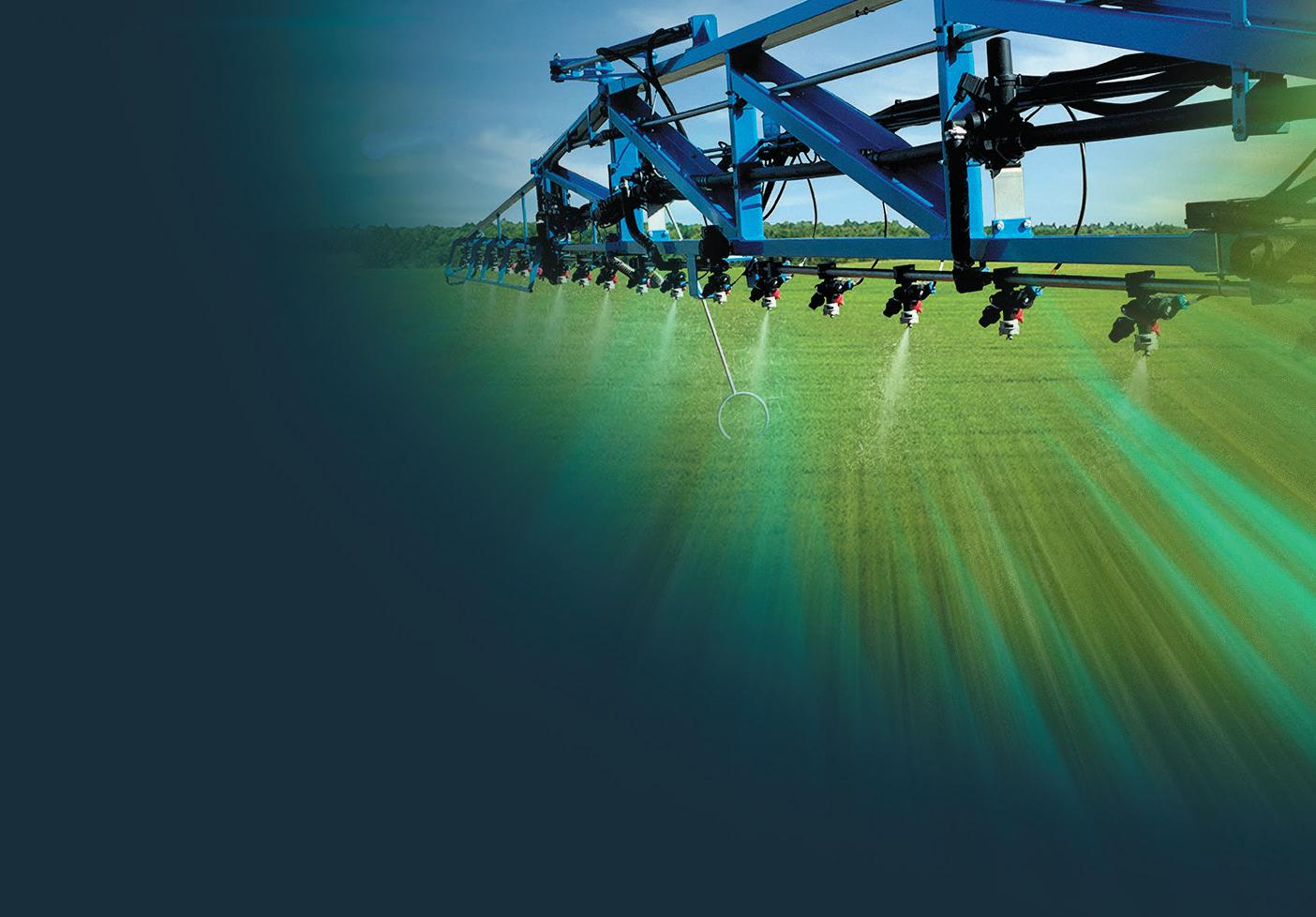

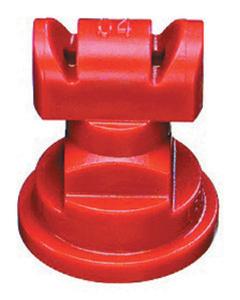




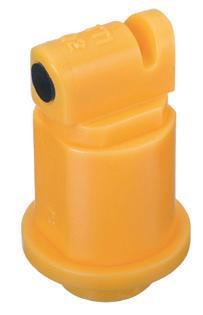
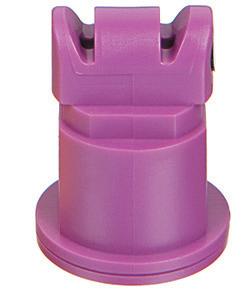
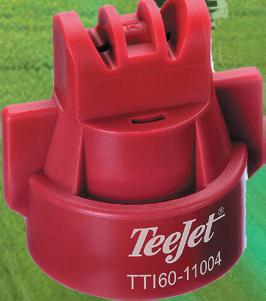
INSTAGRAM: @COTTONFARMINGMAGAZINE MAY 2024 | COTTON FARMING 11 TeeJet has the right spray tip for you. Download the TeeJet SpraySelect app or visit www.teejet.com/sprayselect PWM APPROVED SPRAY TIPS
Cotton Weed Management Considerations in the Mid-South
BY CASSIDY NEMEC ASSOCIATE EDITOR
Finding the right timing when it comes to cotton weed management can be tricky. Weather, soil type and many other environmental factors come into play. Kaelin Saul, BASF technical service representative for Louisiana and Mississippi, said timing plays a key role in weed control.
She recommends going behind the planter with a residual product before coming back with postemergence applications in order to overlap residuals for overall better weed control. “The easiest time to control a weed is before it actually comes out of the ground.”
Saul said preemergence herbicide applications of Prowl H2O, Cotoran or Brake can be good options to ensure you are beginning the season with clean fields. Following with POST applications of residual herbicides, such as Zidua SC and Outlook, help extend season-long weed control.
Zidua SC And Outlook As Residual Options
Two residual POST herbicide options are Outlook and Zidua SC. According to Saul, Outlook requires less rainfall activation at just around one-quarter of an inch. “If your region doesn’t receive much rainfall or you have dryland cotton with little chance of rain in the forecast, Outlook would be a good residual herbicide to throw in the tank with your POST application.”
Zidua SC has two different application methods: post-directed or layby applications and impregnation on fertilizer.
“While layby applications are not new, there is a new drop-nozzle program this year to help growers with purchasing drop nozzles for their sprayers,” Saul said. “These drop nozzles are more rigid than typical layby equipment and allow growers to cover more acres in less time. The drop nozzles help get underneath the cotton canopy to make sure the product is making it to where it needs to go. Impregnation of Zidua SC on fertilizer provides another option for areas where the drop nozzles might not be an option, like hilly fields.”
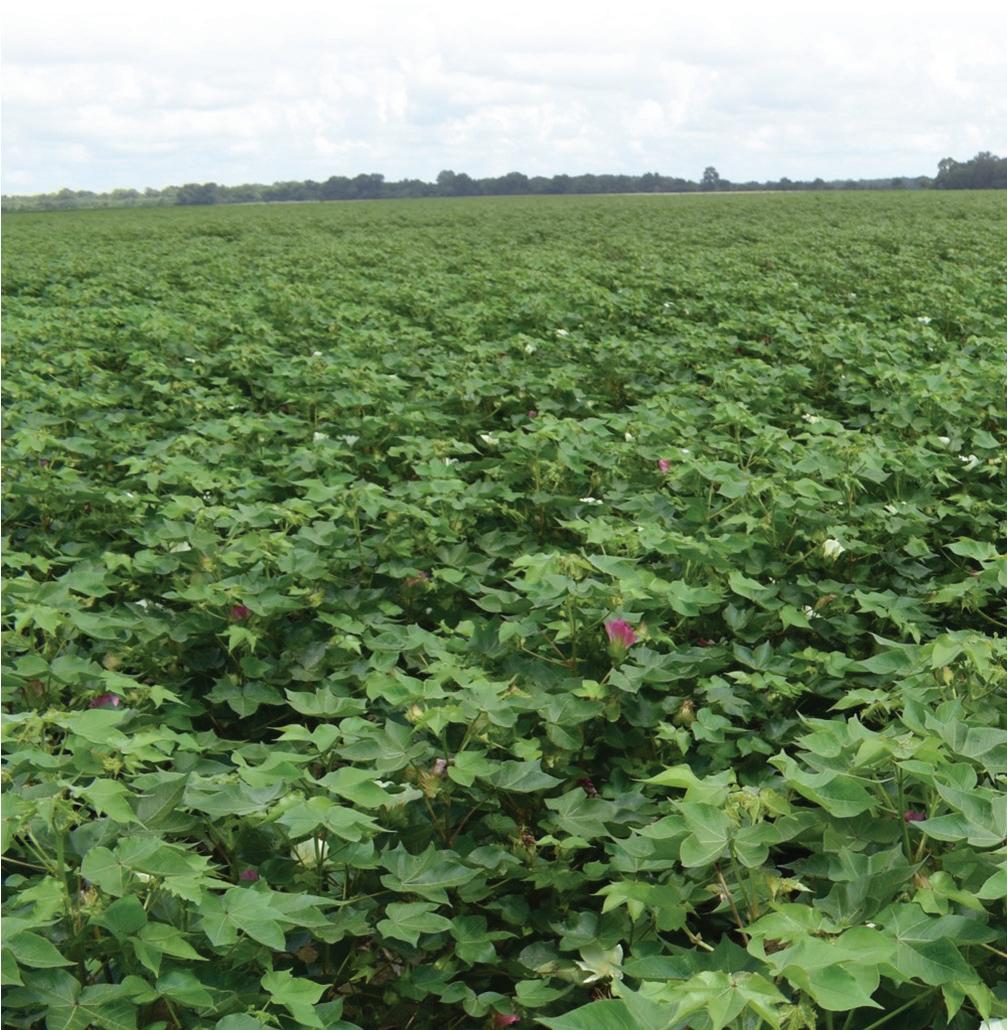

For impregnation, Saul recommends using 250 lbs. per acre
of fertilizer, which can be a blend, to give the best coverage.
Both application methods allow Zidua SC to be applied from 5-leaf to beginning bloom. Saul said this provides flexibility to get Zidua SC on the cotton acre.
Zidua SC requires half to three-quarters of an inch of rain or irrigation for activation. “Even though Zidua requires more to be activated, it does not degrade under sunlight like some other Group 15 herbicides, so it can wait longer for that activating rainfall,” Saul said.
Depending on environmental conditions, she said they see extended residual control with Zidua SC.
Other Factors
If a big storm comes through after an initial residual application, Saul said the state of the weeds in the field and time of year can play a big role in determining next steps.
“If it’s the heat of the summer and a storm rolls through, bringing with it a flush of weeds, that’s going to be a time to follow up with another herbicide application using a POST, such as Liberty or Roundup, with a residual in the tank to control the emerged broadleaves and grasses and hold back the weeds from re-emerging before the cotton has a chance to canopy.”
Engenia and Liberty are some other postemergence product options. Saul said the limited Engenia supply still out there is a good option for dicamba-tolerant cotton.
“Outlook is great as it tank mixes well with Liberty and makes it a bit hotter to kill broadleaf pigweeds you don’t want, especially weeds hardened from environmental stress.”
Overall, Saul said for water volume, they recommend 20 gallons of water per acre, especially with Liberty. “With Liberty being a contact herbicide, we want to make sure we are getting really good coverage. By layering residuals, we can protect our yield potential and provide effective weed control of broadleaves and grasses, which is one way we can manage weed resistance to herbicides.”


COTTONFARMING.COM
Celebrating Arizona Soil And Climate
BY JULIE MURPHREE ARIZONA FARM BUREAU
When you hear him speak on soil, it’s not so much like a lecture though he’s been a professor teaching at the University of Arizona for decades. Instead, you hear a passion about Arizona’s climate and soil that stands out. One U of A graduate calls Jeffrey Silvertooth, Ph.D., the “King of Soils.” He also is the former state cotton specialist. Recently, Dr. Silvertooth was our guest on KTAR’s Rosie on the House — a statewide weekend radio program — highlighting not only Arizona’s climate but the state’s soil type.
According to Silvertooth, “The state soil of Arizona is the Casa Grande sandy loam that is commonly found in alluvial areas [soils deposited by streams and rivers over centuries] of Pinal, Pima and Maricopa counties.”
He adds that Arizona soils are geologically young, fertile and extremely productive if they are reclaimed and managed from excessive salt and sodium — a natural part of desert soils — and sufficient water is provided by irrigation.
As always, the “Farm Fresh” hour went fast but was a wealth of information worthy of an entire listen on one of your walks or jogs. We concluded this segment with a celebration of one of Arizona’s Five C’s, climate.
Some of the points Silvertooth shared in the program are as follows:
Facts About Soil
■ There is a common saying: “We owe our existence to a six-inch layer of topsoil and the fact it rains.”
■ Soil is considered the “skin of the earth.” Forming the surface of land, soils are complex mixtures of minerals, water, air, organic matter and organisms that are the decaying remains of once-living things.
■ The main particles that make up soil are categorized into three groups by size: sand, silt and clay.
■ Soils are found in vertical layers referred to as “horizons” that consist of humus or organic matter, topsoil, eluviated (transported) materials into lower horizons, subsoil horizons, parent mate-
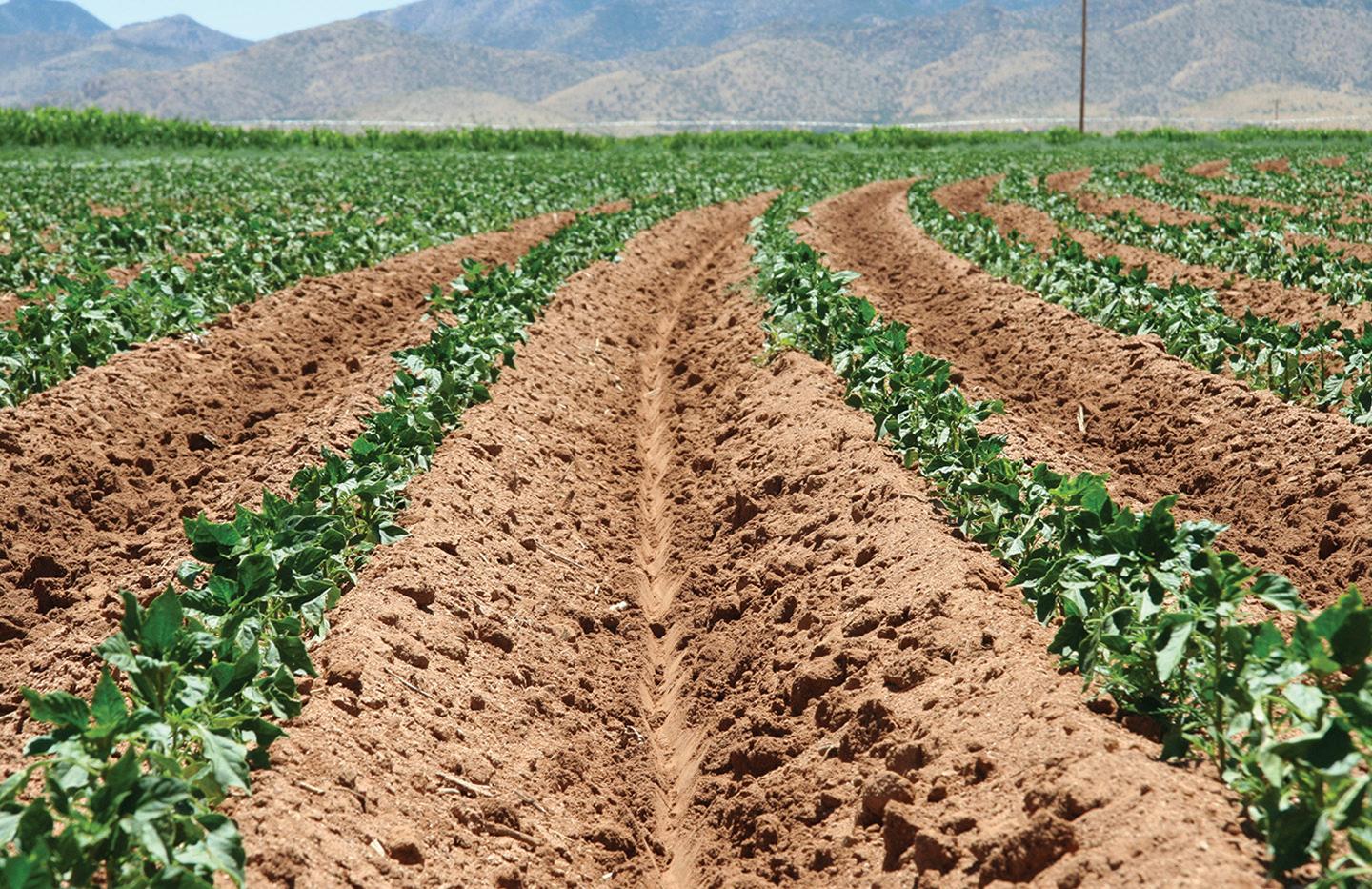
Arizona’s higher temperatures are ideal for certain crops, such as the chile peppers shown above. Also, cotton gains much of its growth in the hottest months of an Arizona summer.
rial and bedrock.
■ A quarter of a tablespoon of soil, or one gram, can host up to 10 billion bacterial organisms consisting of approximately 10,000 different species. This same amount of soil contains at least one million actinomycetes organisms and one million fungal organisms. Soil is literally alive!
■ Only about 1% of the microorganism species found in soil have been identified.
■ Soil is one of the largest reservoirs of microbial diversity on earth; this includes many single-celled organisms, such as bacteria and archaea, as well as certain fungi.
■ 95% of food production relies on the soil.
■ Soils store more carbon than the atmosphere, and all the world’s plants and forests combined.
■ Earthworms are heroes of soil for aeration and more.
■ Soil serves as a medium for the growth of plant life.
■ Soil modifies the atmosphere by emitting and absorbing gases (carbon dioxide, methane, water vapor and the like) and dust.
■ Soil absorbs, holds, releases, alters and purifies most of the water in under-
ground systems.
■ Soil is a living filter to clean water before it moves into an aquifer.
■ The relative proportions of sand, silt and clay form the soil texture.
Climate Impact On Soil
■ Arizona has 300-plus days of sunshine that allow us to extend our growing season.
■ In Arizona, farmers plant and harvest every month of the year.
■ While the Arizona climate lets us grow year-round, our sun can burn up the soil’s organic matter making farmers’ efforts to incorporate organic matter more challenging but doable.
■ Our higher temperatures are ideal for certain crops. For example, cotton gains much of its growth in the hottest months of an Arizona summer.
■ Due to Arizona’s mild winters, Yuma became the Winter Lettuce Bowl Capital of the nation.
Julie Murphree is Arizona Farm Bureau’s Director of Strategic Communications. Her sources on soil and climate include: The University of Arizona, Dr. Jeff Silvertooth of the University of Arizona, the Soil Science Society of America and Arizona Farmers and Ranchers.
INSTAGRAM: @COTTONFARMINGMAGAZINE MAY 2024 | COTTON FARMING 13
New Cotton Faces In The Southern Plains
University Extension personnel and researchers are critical partners to The Cotton Research and Promotion Program (the Program). Cotton Incorporated supports regional Extension cotton specialists and agronomists through state support and core funding dollars. In the Southern Plains region of the Cotton Belt, there have been some recent hires to fill three valuable industry positions in the cotton Extension/research space. I spent time chatting with each of them about their new positions.
 BY SHELLEY HEINRICH SLATON, TEXAS
BY SHELLEY HEINRICH SLATON, TEXAS
Texas
Dr. Ken Legé is the new Extension cotton specialist at Lubbock’s Texas A&M AgriLife Extension & Research Center. He brings experience, energy and leadership to the position. Legé earned a Bachelor of Science degree from Sam Houston State University and an M.S. and Ph.D. from Texas A&M University. His professional career began as the Extension cotton specialist for Clemson University, and he continued by serving in various technical, research and development and commercial roles for various cottonseed companies over the span of three decades.
When I asked Legé about his new role, he emphasized the importance of partnering with the Program and the Texas State Support Program to secure critical funding for many of his research projects. Some key priorities Legé plans to focus on include irrigation and water research, cottonseed quality and variety selection.
“Since water availability is key to growing cotton in West Texas, and since nearly every input interacts with water, my long-term goals are all related to researching and developing Extension programs focused on water,” he said. “Our Replicated Agronomic Cotton Evaluations (RACE trials) compare commercial varieties in on-farm, large-plot trials that span the West Texas region and represent as many growing environments and scenarios as possible. We will record weather data onsite to develop a robust dataset to correlate yield, fiber quality, growth and development with temperature, moisture, solar radiation and evapotranspiration.”
Oklahoma
Jenny Dudak officially joined the Cotton Extension Program at Oklahoma State University in May 2024. She earned her Bachelor of Science and M.S. degrees from Texas A&M University and will complete her Ph.D. from Oklahoma State University this month. Her M.S. research project evaluated new reniform nematode-resistant varieties for yield and nematode population suppression. Her current research project evaluates weed control using isoxaflutole tankmix partners in the new Axant Flex cotton varieties.
Dudak grew up in a small town in northeastern Iowa and spent much of her time on her grandparent’s farm in Northwest

Illinois. She proudly says, “Although I did not grow up on a cotton farm, I got there as quickly as possible.”
Her long-term goal for the Cotton Extension Program at OSU, with funding from the Program and the Oklahoma State Support Program, will be integrating economics into recommendations, where feasible, to most effectively cater to various production practices within each cotton production region.
“I care about our cotton producers making a profit and understand production practices are not one size fits all,” Dudak said. “For example, a cotton producer with access to ample irrigation may have the flexibility to increase in-season input costs to maximize profits more than a dry land producer relying solely on Mother Nature for moisture. In the case of these two scenarios where yearly budgets may differ, we can give more specific input recommendations to ensure each producer reaches maximum profit.”
Kansas
This April, Logan Simon joined the Kansas State University Western Kansas Research-Extension Center and Department of Agronomy as an assistant professor and the Southwest area agronomist. He works from the Southwest Research-Extension Center in Garden City, Kansas. Simon earned a Bachelor of Science in plant sciences from the University of Missouri and his M.S. and Ph.D. in agronomy from Kansas State University.
With funding from the Program and the Kansas State Support Program, Simon hopes to reestablish the Kansas State Cotton Variety Testing Program. “This program will bring unbiased performance comparisons to our cotton growers in Kansas,” he said. Simon also understands the great need for recommendations for soil fertility management, planting practices, irrigation scheduling and pest management that match Kansas’ unique growing conditions, which differ significantly from the rest of the U.S. Cotton Belt.
These cotton specialists and agronomists are looking forward to the 2024 production season. Speaking with each of them, I felt their excitement and enthusiasm for their new positions. I look forward to spending more time with each of them and hope we can visit you in your cotton field soon!
Shelley Heinrich is The Cotton Board Southern Plains regional communications manager. Email her at sheinrich@cottonboard.org.
14 COTTON FARMING | MAY 2024 COTTONFARMING.COM
SOUTHERN PLAINS REPORT
Dr. Ken Legé, Jenny Dudak and Logan Simon
NCC Names Oscar Johnston Lifetime Achievement Award
Steve Verett, a former director of the National Cotton Council and current special advisor, received the Oscar Johnston Lifetime Achievement Award for 2023. Outgoing NCC Chairman Shawn Hollady presented the award.
Established in 1997, the award is named for Oscar Johnston, whose vision, genius and tireless efforts were foremost in the shaping and organization of the NCC. It is presented to an individual who serves the cotton industry, through the NCC, over a significant period of his or her active business career.
The award also recognizes those who exert a positive influence on the industry and who demonstrate character and integrity as well as perseverance and maturation during that service.

Verett, a Texas native, is a graduate of the NCC’s 1985 Cotton Leadership Program class. He remains an actively engaged member of the NCC, having served as a director. Currently, he holds the position of special advisor to the NCC’s Conservation Task Force and is a member of its Cotton Leaf Roll Dwarf Virus Working Group.
His involvement extends to his past role as a director for Cotton Council International in 1985, and he maintains his commitment as a special advisor to CCI. Verett also has been affiliated with the American Cotton Producers, where he continues to contribute as a member of the ACP’s Crop Insurance Working Group and as an advisor to its Farm Policy Task Force.
Verett accepted the role as CEO of Plains Cotton Growers, Inc., in 1997, having previously served as a producer board member from Crosby County and as PCG board president in 1988 and 1989 and chairman in 1990 and 1991. He also served as chairman of the PCG Boll Weevil Steering Committee in 1992 and 1993. Verett retired in 2021 after 24 years of service to PCG and the High Plains cotton industry.
Since retirement, Verett is back on the farm operation he started with his brother Eddie in 1976, now assisting his son Kristofer. He and Kristofer farm in Crosby County where production includes cotton, corn, sorghum, summer fallow cover and forage crops.
Continued from page 11
Texan Receives Harry S. Baker Distinguished Service Award
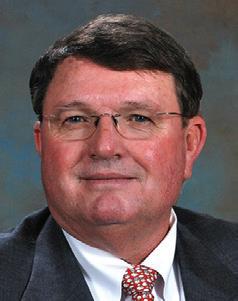
Eddie Smith, a former chairman and vice chairman for the National Cotton Council received the 2023 Harry S. Baker Distinguished Service Award. The award, named for the late California industry leader and past NCC President Harry S. Baker, is presented annually to a deserving individual who has provided extraordinary service, leadership and dedication to the U.S. cotton industry.
Smith, who earned a degree in agricultural economics from Texas Tech University, began farming full-time fol-
lowing graduation. Today, he maintains a cotton, cattle and grain operation near Floydada, Texas, in partnership with his father, Ed, and son, Eric.
He has served as a director of Floydada Cooperative Gin and was elected to the board of directors of Plains Cotton Cooperative Association in 1984. He was unanimously elected chairman of PCCA in 2004.
Very active in the U.S. cotton industry, Smith has a long and distinguished record of leadership and service. In presenting the award, outgoing NCC Chairman Shawn Holladay said, “Mr. Smith served as chairman of the National Cotton Council in 2010. Prior to that, he served as the Council’s vice chairman and on numerous Council committees including its Environmental Task Force. He also completed the Council’s Cotton Leadership Program in 1991.”
Cotton Consultant of the Year established 1981
Nominations Open For 2024
CCO Y
The Cotton Consultant of the Year Award is sponsored by Syngenta and Cotton Farming magazine. This prestigious award honors a consultant for dedication, innovation and hard work. Their footprints in the field and eyes on the crop help cotton farmers succeed and maintain a healthy bottom line.
Go to cottonfarming.com/ ccoy to access the 2024 nomination form and a list of past recipients. Nominees are voted on by the former CCOY winners.
The 2024 CCOY will be honored Feb. 28, 2025, at the Peabody Hotel in Memphis and featured in a four-page salute in the February 2025 issue of Cotton Farming.
Nominate a consultant today who has enriched your cotton farming operation!
Cotton Consultant of the Year sponsored by

INSTAGRAM: @COTTONFARMINGMAGAZINE MAY 2024 | COTTON FARMING 15 Industry News Cotton Farming CCOY
Eddie Smith






With Our Family of Cotton Products




We know these are more than just fields is where you picked cotton with your grandad and where your daughter’s children will scout for the first time. That’s why our family of cotton products features trusted performers and elite newcomers your family

































































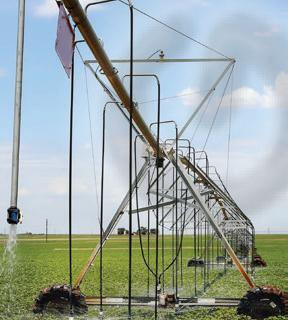
















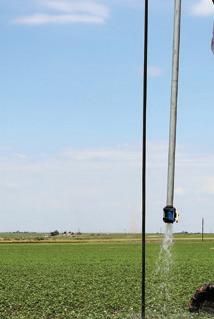




























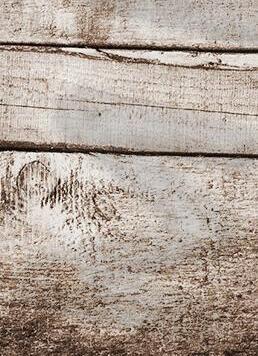
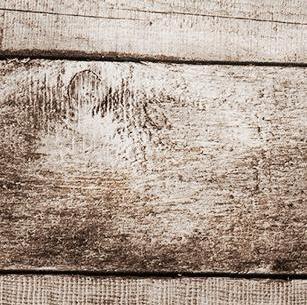



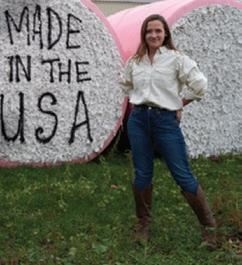


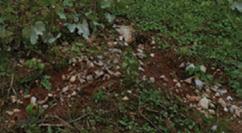





16 COTTON FARMING | MAY 2024 COTTONFARMING.COM
Treat Your Fields Like
© 2024 AMVAC Chemical Corporation is a wholly owned subsidiary of American Vanguard Corporation. All rights reserved. AMVAC, ZALO, Envoke, Bidrin 8, BioWake, Folex6 EC, and respective logos are trademarks owned by AMVAC Chemical Corporation. Bidrin 8 is a restricted use pesticide. Important: Always read and follow label instructions. See label for listed weeds and pests. Some products may not be registered for sale or use in all states or counties. Please check with your state agency responsible for pesticide registration to ensure registration status. All products are EPA registered. COTTON Family — this to protect — every season. Learn More at AMVAC.com/Cotton 14 COTTON FARMING | OCTOBER 2023 Farmers United Farmers ing grown ing and Agricultural er a Europe their The Job Nations farmers States, “We nity voices ers aren’t are practices, share BASF the Cotton the gram. ty for to track and duction. The Macy’s, The recently leading Cotton Headquarters PROFITABLE PRODUCTION STRATEGIES ‘Watering Cotton’ Water-Use Efficiency With Profit North Carolina On Agricultural Practices During Arizona’s Low Desert Monsoon Season Reaching The Finish Line In Georgia From A Perennial To An Annual Collaborate On Red Land Cotton MISSING Don’t Miss A Single Issue! Don’t let your next issue of Cotton Farming magazine go missing! Avoid interruption of your FREE subscription by scanning the QR code below to renew now.
Preparing For Early Season Pests Specialists Speaking
VIRGINIA Hunter Frame
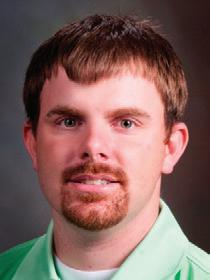
In Virginia’s climate, early season growing conditions can be highly variable during the month of May. Thrips are the No. 1 pest in Virginia, and there seems to be concerns of insecticide resistance to commonly used chemical control products. Technology traits within certain cottonseed brands provide good control of thrips injury; however, for resistance management, this cotton needs to be scouted as well.
The standard program for thrips management in Virginia has been a foliar acephate spray at the first true leaf growth stage or in-furrow insecticide applications at planting. Seed treatments offer some control, but the foliar or in-furrow insecticide applications are often better performing. We cannot control the weather, but for optimal early season growth, cotton needs to be planted when soil temperatures are greater than 65 degrees Fahrenheit and days are on a warming trend after planting. This will ensure that cotton seedlings are rapidly growing and will be less at risk from severe thrips injury.
In 2023, May was one of the coolest on record and in some cases, cotton was sprayed twice with acephate to alleviate thrips injury. This was due to cotton not rapidly growing, causing thrips injury to be more severe than in years where cotton was developing new growth rapidly and able to withstand thrips feeding. Thrips injury will delay cotton maturity, though predicting yield losses is difficult. The best management is actively scouting and using chemical control products that your Extension entomologist recommends. whframe@vt.edu
NORTH CAROLINA Guy Collins

May is when widespread planting is underway in North Carolina. As I write this March 28, there’s no way to foresee what planting weather will be like in May. Frequently monitoring conditions on your farm using the Cotton Planting Conditions Calculator (https://products.climate.ncsu.edu/ag/cotton-planting/) can help you navigate through the planting season. Ideally, we’d have 50 DD-60’s accumulated in the first five days of planting, but the calculator can help growers to know when to avoid planting and when to resume. Adjusting seeding rates according to planting conditions and seed quality remains to be important in ensuring adequate stands. Beyond stand establishment, early season weeds and insect pests are likely the next in line in terms of where our attention will be given, and I’m sure that last year’s issues with thrips will not soon be forgotten. During the spring of 2023, we had a perfect storm for thrips in that we had enormous thrips pressure, prolonged slow early season growth that magnified the problem, and in many cases, acephate resistance. Heat unit accumulation during that time was sufficient for achieving good stands, with little replanting, but was lacking in terms of heat needed for rapid seedling growth. This lasted well into June, which is unusual for us.
The acephate resistance was new to us, and was spotty, therefore acephate was sprayed in a few cases without a quick follow-up evaluation of efficacy. This allowed thrips to feed noticeably longer before they were properly addressed using products like Radiant+surfactant. This delay in effective treatment further magnified the problem. With regard to thrips, years like 2023 are rare. With that said, several growers are likely tempted to plant some ThryvOn cotton, which clearly has an advantage when it comes to thrips. As of now, we don’t know what the 2024 planting season will hold for thrips, but using the NCSU Thrips
Infestation Predictor (https://products.climate.ncsu.edu/ag/cottontip/) can certainly help growers understand when to plant to minimize thrips problems, when during the planting window they will get the most benefit from ThryvOn or which fields may need more attention/management for thrips. guy_collins@ncsu.edu
TENNESSEE Tyson Raper

As you read this at the beginning of May, we are hopefully on the cusp of planting a large percentage of our acres. As you are looking at the forecast to determine when to plant, I would encourage you to think about the conditions in which you have seen your stands fail.
Over the past several years, I have had an opportunity to plant in a range of adverse conditions, both from a temperature and rainfall standpoint. While I would prefer to plant into soil that is 65 degrees Fahrenheit or warmer at an inch depth at 9 a.m., I have frequently been able to achieve excellent stands when planting into soil temperatures much, much cooler than I would prefer.
From my experience, the “nail in the coffin,” which creates most environmentally driven replant situations, is an excessive rainfall event immediately following planting. I bring this up because occasionally we are given a slightly cool but dry window at the end of April or in the first few days of May. I am becoming more comfortable planting in those cool, dry windows based on these observations. traper@utk.edu
MISSOURI Bradley Wilson

We are still a few weeks shy of planting in Missouri at the time of these comments. However, several early season pests can impact cotton growth following planting. Starting weed free can reduce early season insect pests but also benefits cotton growth due to reduced competition.
Thrips are a major insect pest early season in cotton through the four-leaf growth stage. Management options of thrips include an in-furrow insecticide or foliar insecticide application at the one- to two-leaf growth stage. Multiple applications may be needed if cool or slow-growing conditions are observed following emergence. New ThryvOn varieties on the market appear to be useful in early season management of thrips as minimal damage has been observed in Southeast Missouri. Severe storms and wind causing sandblasting to cotton following emergence can produce symptoms similar to thrips damage. It is important to confirm thrips are present and above threshold prior to making a foliar insecticide application.
Several soil-borne diseases can impact cotton emergence during our planting window. Planting into favorable soil conditions with a five-day warm outlook can reduce seedling disease incidence. When planting on poorly drained soils or in unfavorable conditions, in-furrow fungicide applications can provide greater protection against organisms that cause seedling disease.
Nematodes are a yearlong pest, but control options are limited to at-planting management options. Typically, root-knot nematodes are the dominant species in Missouri fields. Management options include cotton nematicide seed treatments, in-furrow nematicides and resistant varieties. Cotton seed treatments do not provide lasting control in fields with heavy infestations, and in-furrow nematicide applications will provide greater control. Resistant varieties have been observed to be the best option when planting into fields with high root-knot nematode populations. brwilson@missouri.edu
INSTAGRAM: @COTTONFARMINGMAGAZINE MAY 2024 | COTTON FARMING 17
Specialists Speaking
TEXAS Ben McKnight

At the time of this writing the first week of April, planting of the 2024 cotton crop has mostly concluded in the Lower Rio Grande Valley and the Coastal Bend regions. Growers in the Upper Gulf Coast have been planting as weather conditions have allowed, and approximately 40% to 50% of the cotton crop has been planted in this region. Soil moisture conditions are in good shape throughout much of the state along the Gulf Coast, and currently no drought conditions exist from the Lower Rio Grande Valley all the way to the Louisiana-Texas state line. By the time you read this in early May, planting will be well underway in many of the other cotton production regions across the state.
In the late 1960s, Gail Buchanan and Earl Burns conducted trials in Alabama evaluating the impact of weed competition in cotton. Results from their work highlight the importance of keeping a cotton crop weed free for the first eight weeks following emergence to reduce yield losses resulting from early season weed competition. Over 50 years later, early season weed control is as important as ever, especially with the presence of herbicide-resistant weeds in many of our cropping systems across the state.
As a weed scientist by training, I am a big advocate for an aggressive weed management approach on the front end of the season. Residual herbicides can provide a foundation for effective weed control throughout the critical weed-free period early in the growing season, thereby reducing potential yield loss from early season weed competition. Additionally, residual products can greatly enhance our herbicide-resistance management efforts by reducing the pressure we put on postemergence herbicides applied later in the season on actively growing weeds. Overlaying residual products with postemergence applications can further extend weed control efforts longer into the growing season.
For many of our residual herbicide products, rainfall or irrigation is necessary for the product to be actively taken up by susceptible weed species. To maximize weed control activity and return value to our overall weed management programs, I encourage applicators to thoroughly familiarize themselves with each herbicide product label prior to making an application. A great resource covering all topics related to weed management for Texas cotton production can be found at the following: http://cotton.tamu.edu/Weed%20Management/2017%20Cotton%20 Weed%20Control%203-15-2017.pdf. bmcknight@tamu.edu
TEXAS Ken Legé
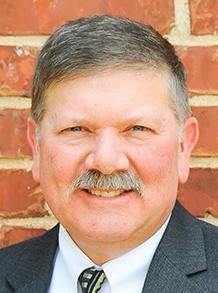
Our warm spring temperatures have growers anxious to get the season started. Similarly, weeds are also enjoying the warm spring temperatures, so growers have responded with yellow herbicide applications, as well as some burndown applications on the better-than-average cover crop in the region. Cover crops not only help reduce windblown sand damage for early seedlings, but under the right circumstances can preserve soil moisture. In West Texas, it is always a balancing act of allowing the cover to grow to adequate size, but then kill it in enough time to regain surface soil moisture for our cotton crop.
Recent data from Drs. Joseph Burke and Katie Lewis at Texas A&M AgriLife Research in Lubbock have shown that the amount of cover needed is not as much as many growers think. Their recommendation is to burn the cover down earlier rather than closer to planting since it doesn’t take much biomass to reduce wind erosion and windblown sand damage. It also gives you more time to rebuild soil moisture in the seed zone. See details of Drs. Burke’s and Lewis’ work at: https://www.txsoillab.com/.
Once we reach planting season, growers should focus on the following: 1) planting into a clean field; if any weeds are present at planting, con-
trolling them will be an added challenge all season; 2) layering your residuals at planting and three to four weeks following planting (depending on rainfall and temperatures during that time period) and avoiding any gaps in residual activity; 3) being aware of the potential and scouting for wireworms in no-till fields, especially those with a cover crop, and being prepared to apply pyrethroids at planting to control; and 4) monitoring and preparing for any thrips infestation immediately following emergence. Seed treatment insecticides, foliar insecticides and varieties with ThryvOn technology (see a recently published Texas A&M AgriLife factsheet on ThryvOn by Drs. Suhas Vyavhare and David Kerns at: https:// lubbock.tamu.edu/files/2024/02/ENTO-PU-223-ThryvOn-Cotton_fn.pdf) are very effective at controlling populations. We are fortunate in our region (especially the areas south of Lubbock) that thrips are not always at economic threshold; however, our more northern regions (Lubbock northward and throughout the panhandle) regularly have thrips pressure high enough to warrant control measures and avoid delays in maturity. Growers throughout the high plains should keep an eye out for our Texas A&M AgriLife Replicated Agronomic Cotton Evaluations (RACE) trials throughout the region this season. My program will have 19 locations from Bailey County to Borden County, and Dr. Jourdan Bell will have six locations throughout the panhandle area. This will give growers many opportunities to compare varieties’ emergence, growth and development, and ultimately, yield and fiber quality. These locations will be well-marked and plot plans will be available both online via QR codes and hardcopies onsite. And thanks in advance to all our grower cooperators, participating seed companies, Plains Cotton Growers and the Texas State Support Program through Cotton, Inc. who all make this program available and successful! ken.lege@ag.tamu.edu
MISSISSIPPI Brian Pieralisi

Cotton acres in Mississippi are expected to increase by 28% compared to 2023. With cotton prices a bit higher and other row-crop prices lower than they were this time last year, Mississippi is projected to plant 500,000 acres. As I write this, spring is ahead of schedule again, similar to last year; thus, conditions are lining up for early planting dates. However, a cold snap is never out of the question until after the first two weeks of May. Growers should focus on management tactics within their control and take advantage of any favorable planting opportunities.
Thrips are the primary early season pest affecting Mississippi cotton. Over the past several years, thrips pressure has been unusually high causing multiple applications in some cases. This can likely be attributed to slow-growing cotton met with environmental conditions favorable for this pest. Typically, by the three- to four-leaf stage, cotton plants are past the most susceptible stage for economic injury or delays in maturity. However, a sound management plan is in order to mitigate injuries from thrips. ThryvOn cotton will comprise more of our acres than in 2023. Currently, ThryvOn cotton effectively manages thrips, allowing for rapid progression through the developmental stages under favorable growing conditions and adequate heat unit accumulation.
Early season thrips management typically consists of the following: imidacloprid-treated seed or in-furrow treatments followed by foliar applications. In-furrow treatments of 1.1 pounds of acephate or 8 ounces of imidacloprid should be directed on or below the seed for most effective control. Under high reniform nematode populations, 3.5 to 5 pounds of aldicarb or planting a nematode-tolerant variety is a good management strategy. Most current cotton varieties are pretreated with recommended fungicides; however, using in-furrow insecticides increases susceptibility
18 COTTON FARMING | MAY 2024 COTTONFARMING.COM
Specialists Speaking
to cotton seedling diseases. So, be sure to plant seeds treated with a recommended fungicide.
Lastly, most cotton grown in Mississippi is conventionally tilled and cutworms are not an issue. However, in both cover-cropped and no-till acres, cutworms could establish on existing vegetation. Cover crops should be terminated at least three weeks prior to planting to avoid risks associated with stand reduction. If vegetation is not terminated three weeks prior to planting, a pyrethroid should be used at planting, which will protect early season cotton seedlings from stand reductions. bkp4@msstate.edu
ALABAMA Steve M. Brown
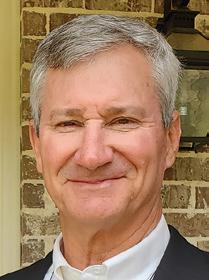
In the 1977 book The World’s Worst Weeds: Distribution and Biology, the authors listed purple nutsedge as the No. 1, “Mr. Weed of the World.” Other common species in their most troublesome list included bermudagrass, barnyardgrass, junglerice, goosegrass, johnsongrass, common purslane, common lambsquarters, large crabgrass, field bindweed, wild oats, smooth pigweed, spiny pigweed and yellow nutsedge.
In addition to geography, cultural practices and herbicide chemistries have a profound impact on weed spectrum. For example, I remember a year when a farmer fallowed a field to fight bermudagrass with tillage. Obviously, this preceded the introduction of the graminicides (Poast, Fusilade, Select, etc.) and fall, post-harvest applications of Roundup. And how many weed scientists’ careers were built on programs targeting sicklepod, a weed now routinely managed with glyphosate systems?
For the Lower Southeast, Palmer amaranth remains a huge challenge. Millions of dollars have been spent fighting this small-seeded, broadleaf annual. Aggressive programs that target troublesome weeds generally provide broad-spectrum control…until a new “most troublesome” pest emerges.
Keys to successful management of problem weeds include starting clean and staying clean. Simple to state from the office, shop or pickup but not easy to accomplish. Staying clean involves repeated applications of residuals — “layering” as some refer to it — and timely intervention with post herbicides. The oft-repeated message — timing is critical — always applies.
Whether the challenge is Palmer amaranth, morningglories or youname-it, timeliness makes a huge difference in herbicide performance, especially for postemergence treatments. Liberty (glufosinate), which is
critical to our management programs, is a good but finicky tool, even in tank mixtures. A little stress, reduced humidity or low light can alter its performance, especially if weeds exceed a few inches. There can be drastic differences in control of one to three-inch Palmer amaranth as compared to those that are five to seven inches. Same effort, same product(s) but vastly dissimilar results.
May is crunch time. Planting. Thrips control. Early season weed control. To borrow from fertilizer doctrine, maximizing inputs requires using the right product(s) at the right rate at the right time. cottonbrown@ auburn.edu
GEORGIA Camp Hand

By the time everyone is reading this, I hope we will have a good bit of cotton planted in Georgia. As I write April 5, we have just started planting plots on the station here in Tifton, with intentions to really start getting after it in a couple of weeks.
When most of you read this in the beginning and middle of May, you will have already made decisions for many early season pests — thrips, seedling disease, nematodes and weed management. As many of you are likely moving into early postemergence herbicide applications, I would urge you to keep in mind the lessons learned from “Using Pesticides Wisely” trainings this spring. I went to the training April 3 here in Tifton and learned a lot of good stuff. But the main take away for me from the training was this: the future of pesticide use across the board hinges on us as applicators. We bear the burden of responsibility, so let’s use these tools correctly so we can keep them in the toolbox long term.
The other early season pest that many of my colleagues likely won’t mention is something I talked about this past winter a lot. If you’re guessing white-tailed deer, you’d be guessing correctly. Although there isn’t an “official” recommendation on how to manage this pest in a cotton crop, I would greatly urge growers to listen to Episode 37 of “All About the Pod” from the University of Georgia peanut team. Here is the link: bit.ly/deerpestmgt
In this episode, Brian Vickery with Georgia’s Department of Natural Resources discusses the use of depredation permits and how to more effectively utilize that tool.
As always, your local UGA county Extension agent and specialists are here to help! Reach out if you have any questions. camphand@uga.edu
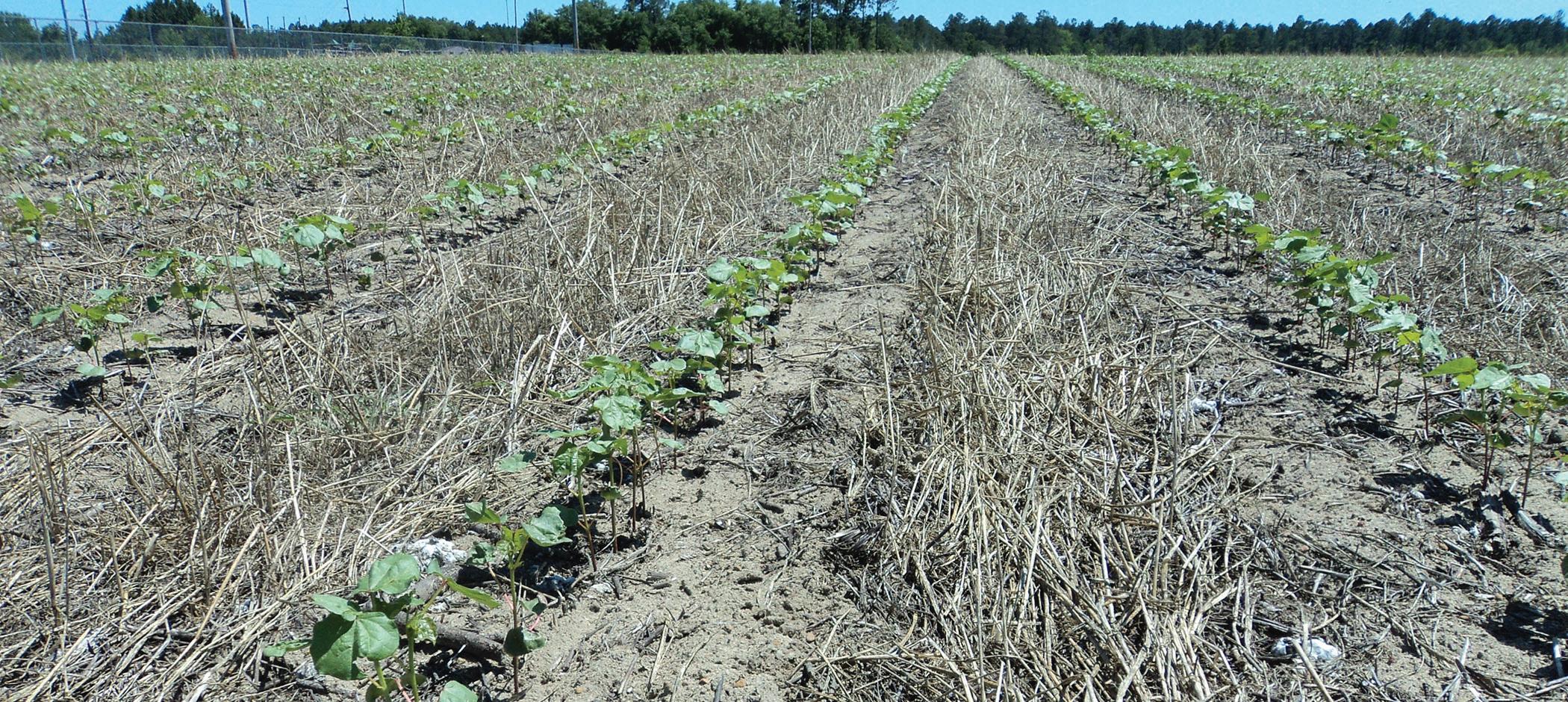
INSTAGRAM: @COTTONFARMINGMAGAZINE MAY 2024 | COTTON FARMING 19
TCGA/Texas Tech Scholarship Fund Helps Grow Cotton Industry’s Future
Cotton Farming magazine, co-sponsor of the Texas Cotton Ginners’ Association Gin Show recently contributed $3,676 to the TCGA/Texas Tech Scholarship Fund.
TCGA Executive Vice President J. Kelley Green, right, and TCGA President Mike Thompson, left, accept the check from One Grower Publishing Associate Publisher/Sales Scott Emerson at the Awards Banquet at the Overton Hotel in Lubbock. Each year the magazine donates a portion of revenue from ad sales in the TCGA printed show program.
“TCGA is proud of our partnership with Cotton Farming magazine on the TCGA Scholarship program,” Green said. “This program is an investment in the future of Texas Tech students and the cotton industry. We believe these scholarships are crucial to our e orts in developing the next generation of agricultural leadership in agriculture.”
On the upcoming schedule, the Texas Cotton Ginners’ Association Summer Membership Meeting will be held at Live! By Loews, 1600 E Randol Mill Rd., Arlington, Texas, June 1618. Don’t miss out on the chance to enhance your knowledge, build valuable connections and have fun at this summer event.
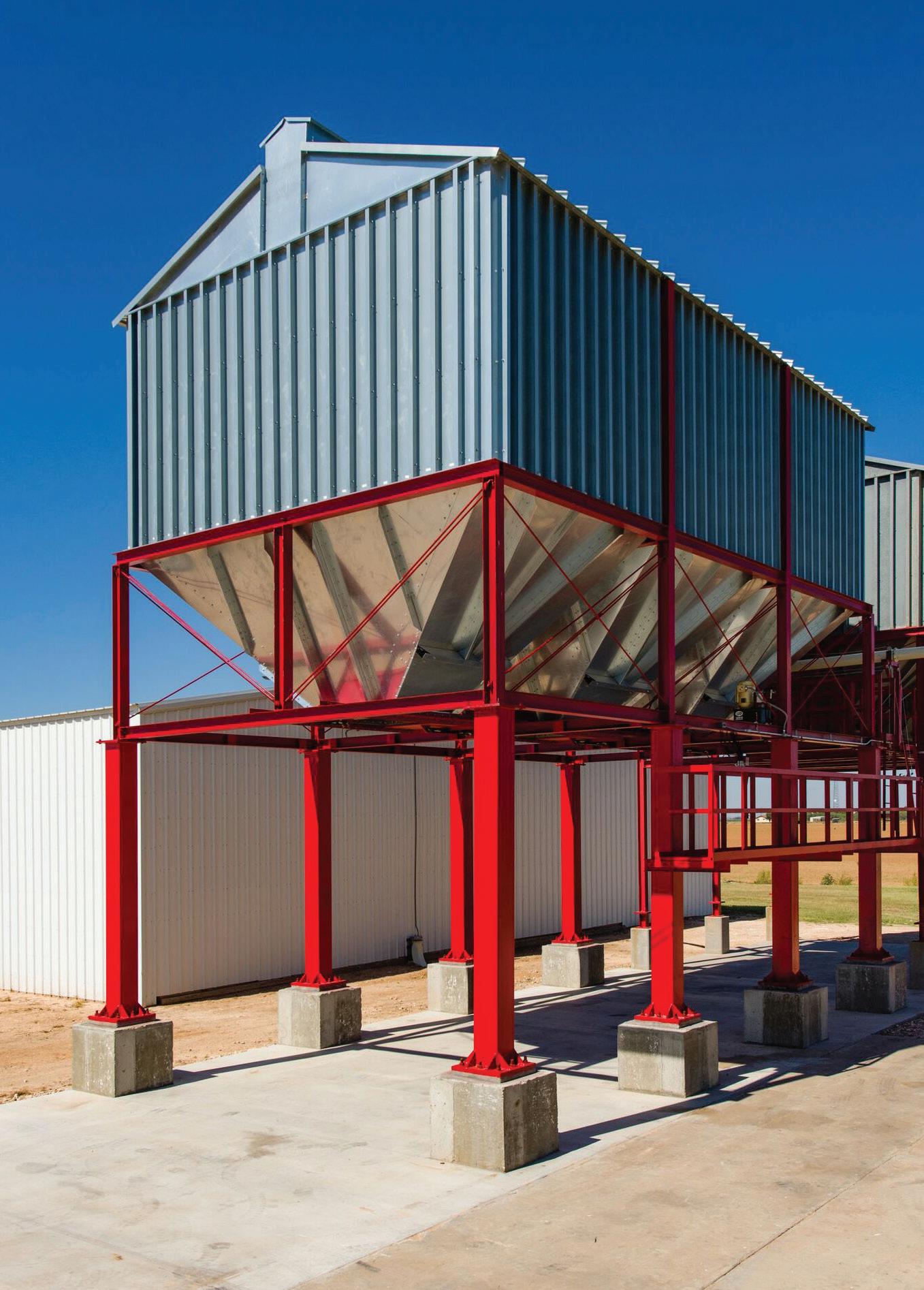
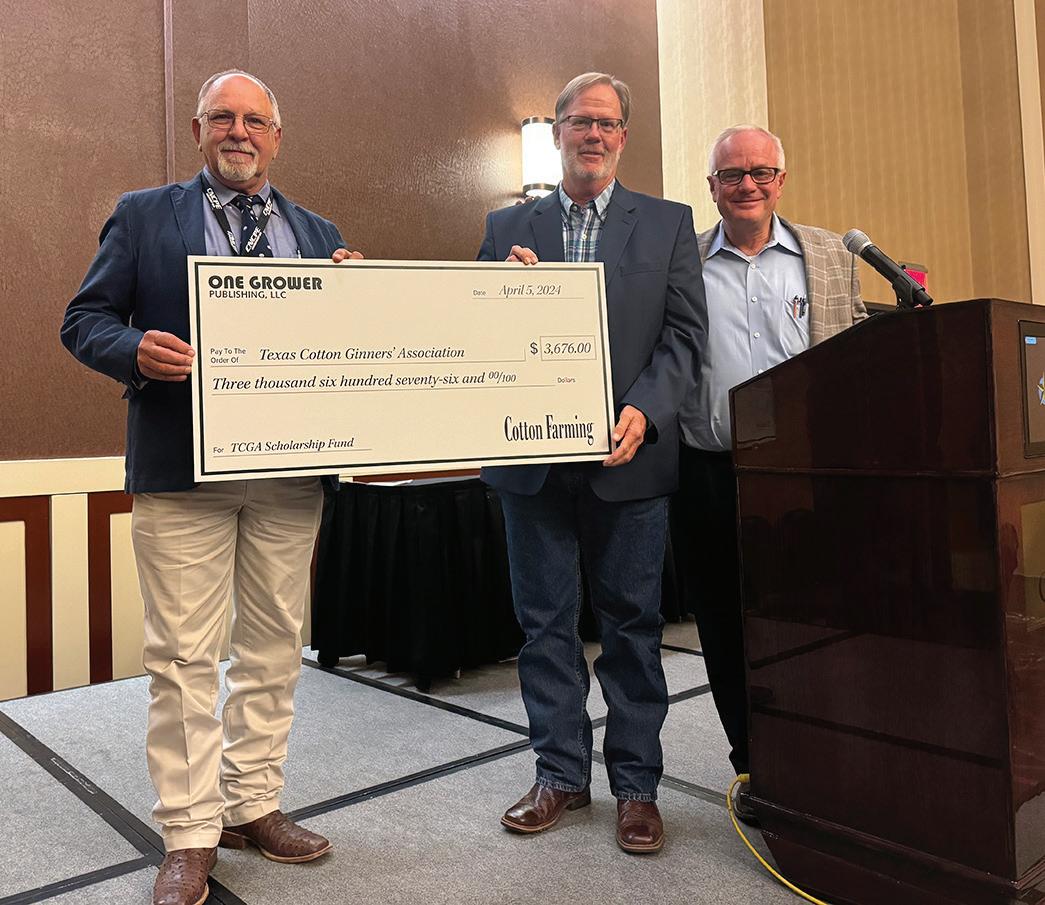
“Trucks
Cotton Ginners Marketplace 20 COTTON FARMING MAY 2024 COTTONFARMING.COM
Steeper Hoppers with 10-Gauge Steel 50% Larger Square Hydraulic Doors Conversion Kits for Most Seed Houses Call Jim - (972) 381-8899 / cliffgranberrycorp.com ELEVATED SEED HOUSE
new seed house”.
wet seed
out
problem.” North Delta Gin Company,Marks, MS MINIMIZE SEED BRIDGING • SAFER • FASTER • STRONGER
are loaded and tarped in just 5 to 10 minutes with our
Even
comes
without a
COTTON
COTTON FARMING IS THE OFFICIAL PUBLICATION OF THE GINNING INDUSTRY.
Ginners Marketplace
NCGA Chooses New Leader During Its 2024 Annual Meeting
The Memphis-based National Cotton Ginners Association named its leaders for 2024 during its annual meeting in Orlando, Florida.
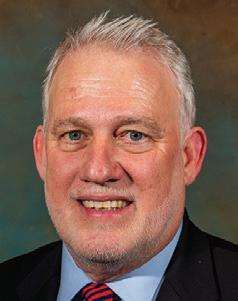
The NCGA’s 2024 o icers are: president – Richard Lindsey, Centre, Alabama; first vice president – Larry Black, Roscoe, Texas; second vice president – Brad Williams, Burlison, Tennessee; and third vice president, Tom Pires of Riverdale, California. Harrison Ashley, Cordova, Tennessee, is NCGA’s executive vice president. Lindsey, previously the first vice president of NCGA, is active in the ownership and management of Cherokee Gin and Cotton Company in Centre. He also is a partner in his family farming operation known as Coosa River Land Company. He was born into a cotton farming and ginning family that traces back to the 1830s.
In addition to his cotton background, he also served his area in the Alabama House of Representatives for 35 consecutive years. He received numerous awards during his legislative career including Legislator of the Year and The Lifetime Legislative Leadership Award.
Lindsey graduated from Jacksonville State University with a degree in business management. He has served in multiple NCGA and NCC leadership positions among them as a NCC director and a director of NCC’s export promotion arm, Cotton Council International.
Paper PBI Hand Tags To Be Phased Out
The Joint Cotton Industry Bale Packaging Committee (JCIBPC), chaired by Chris Berry, a Wellman, Texas, ginner, had its 2024 Annual Meeting in Memphis. During this meeting, the committee approved the updated 2024 Bale Packaging Specifications and set a phase-out date for paper PBI hang tags.
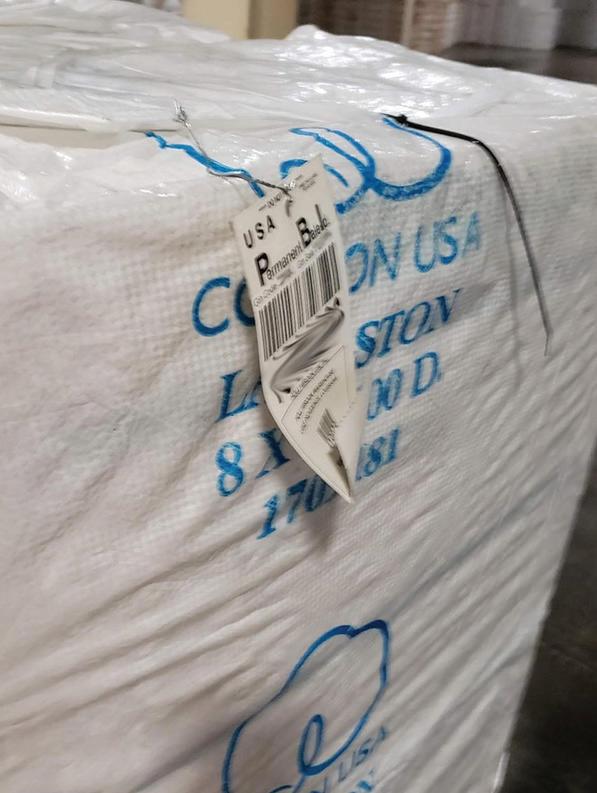
Following the 2024 crop year, only adhesive type PBI tagging will be approved for use per the Bale Packaging Specifications (https://www.cotton.org/tech/bale/specs/index.cfm) and the PBI Tag Specifications (https://www.cotton.org/tech/ bale/upload/24-2-28-22-Specifications-for-Permanent-BaleIdentification-Bale-Tags.pdf.).
This information was provided by The Ginnery, the Texas Cotton Ginners’ Association monthly e-newsletter.
California Leads The Nation On Worker Safety
The Occupational Safety and Health Administration website says that California administers the largest state OSHA plan in the nation and consistently exceeds its inspection goals to protect millions of workers each year.
The Division of Occupational Safety and Health (DOSH), better known as Cal/OSHA, protects and improves the health and safety of working men and women in California and the safety of passengers riding on elevators, amusement rides and tramways – through the following activities:
• Setting and enforcing standards.
• Providing outreach, education and assistance.
• Issuing permits, licenses, certifications, registrations and approvals.
Walking/Working Surfaces Regulation
According to the California Cotton Ginners and Growers Association, the Cal/OSHA Standards Board is working on the fourth draft of its Walking/Working Surfaces Regulation. These revisions are necessary to meet Federal OSHA requirements and prevent falls. The association’s President/CEO Roger A. Isom was asked by Cal/OSHA to sit on the advisory committee and will be participating.
Walking/Working Surfaces include but are not limited to:
• Floors
• Stairways
• Steps
• Roofs
For the past three years, sta has been directed to work with the industry’s tagging suppliers to determine the usage of hanging PBI tags. During this period, usage of paper tags has declined from nearly 900,000 tags to 215,000 in 2023. These tags, which are held on the bale with small gauge wire or zip ties, can cause damage to mill machinery and pose potential fire risk if accidently left in a bale. Due to these issues, the Specifications for Bale Packaging Materials were amended in 2023 to say, “Small gauge wires on bale tags are not recommended.”
Following this year’s report on tag usage, the committee determined hanging PBI bale tags that use small gauge wire or zip ties are to be removed as an approved product from the specifications after the 2024 crop year.
• Ramps
• Runways
• Aisles
• Sca olds
• Dock plates
• Step bolts
The draft proposal would revise and update several safety orders, including definitions, guardrails and toeboards, guard rails and fall protection at elevated levels, personal fall protection systems and falling object protection. Other revisions and updates would include fall protection training requirements, roof and floor openings, service pits, and yard surface openings, stair railings and handrails and stairways.
Agricultural buildings including cotton gins, tree nut hullers and processors and packing houses all will be a ected by the proposed changes. The latest FedOSHA requirements were adopted in 2017 and Cal/OSHA must adopt these changes.

Cotton Ginners Marketplace INSTAGRAM: @COTTONFARMINGMAGAZINE MAY 2024 | COTTON FARMING 21 *****
*****
*****
informative email summary of your gin’s daily performance.
An
for an example report
Text 662-809-9730
Richard Lindsey
My Turn
Texas Cotton — 10 Generations Of Trotters
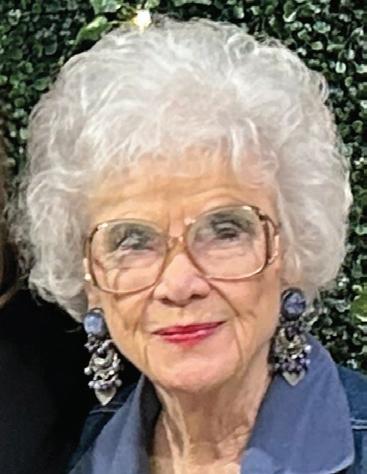
Our family’s roots run deep in farming, specifically cotton. For some, “farming” may just be a word, but for 10 generations, it has been a lifestyle for the Trotter family.
My name is Nancy Willingham Trotter. I was born in Dallas on May 30, 1937. When I was a year old, we moved to my mother’s hometown, Comanche, Texas. After fighting in WWI, my father was too old to be drafted in WWII. He joined the Corp of Engineers to put up lights in the Panama Canal. After the war, we moved to Merkel, Texas. As a young girl, I picked cotton by hand. After three years, we moved to Comanche, where I graduated high school. I then moved to Lubbock to attend nursing school.
I met a girl named Claudette, who later became my sister-in-law. Her brother’s name was Billy. After being discharged from the Army, he came home to Lubbock to farm. We got married in 1957. We lived in Lubbock on the Home Place Farm bought by W.B. Trotter in 1919. In 1958, we moved to Dimmitt to farm 160 acres. Billy had a tractor, 2-row Oliver and Boll Puller. Tractors did not have cabs, and there wasn’t a defoliation process. We had to wait, hope and pray for a good freeze.
times of the year. Everything comes second to our livelihood and God, the creator of it. Some would say it’s like gambling. Weather is the main factor that is uncontrollable. Rain, wind and hail are a few weather conditions that can be beneficial or detrimental to the crop.
Larger, more efficient equipment has minimized manual labor and allowed us to farm more acres. However, farmers today are learning to farm more acres with less rain and irrigation water. They have tribulations to work through just as we did years ago. As input costs of seed, chemicals and supplies go up, there’s a dependence on Mother Nature to provide rain and accommodating weather conditions to make a profitable crop.
Farming families know it’s a team effort. Even I have changed irrigation water. In 1980, I fell in an irrigation ditch and got completely soaking wet. I drove home pants-less praying that I didn’t get pulled over. I have also plowed. I was the farmhand to the farmhand. Meaning I was to listen to my son, who was the farmhand to my husband.
“Everything comes second to our livelihood and God.”
In 1961, Billy’s father, Ferd Trotter, rented 320 acres near Hale Center, Texas. That January, Billy, our two children — Lizette and Terry — and I moved to a farmhouse near Hale Center. In May, we had another child, David. In 1963, we moved down the road to a bigger house that I still live in today. We rented this land from 1963-1997, when we bought it. This farm is where we raised our kids, Duroc pigs and witnessed how much farming has changed. In 1976, we bought the East Place that is right across the road from our house. Our grandson, Travis, has farmed the Home Place and East Place since 2022.
We used 2-row strippers that blew cotton into trailers that we pulled behind them. We hauled the trailers of cotton to and from the gin. In 1971, we enclosed the trailers. In 1981, we upgraded to a 4-row stripper that had an attached basket and got our first module builder.
Planting, irrigating and harvest seasons are our busiest
My husband, sons and grandsons have a love for farming. Our son, David, started farming in 1984. In 1993, Billy and David became partners (B&D Farms), to farm more land. Together they hired our nephew, Michael Agan. He is still a big part of our farming operation today. When Billy retired from farming in 1999, he left an admirable legacy for his sons and grandsons to follow. Our son, David, and his two sons, Travis and Kole, still farm today. Travis and Kole are the 10th continuous generation to farm cotton.
This past harvest I got to ride in the strippers with David and Travis and boll buggies with Dawnielle, Wyatt and Kole. I will forever cherish that experience. From Billy‘s father using a team of horses to plow and me picking cotton by hand to my son and grandsons farming approximately 6,800 acres, a lot has changed.
This is a challenging lifestyle but growing and harvesting a great crop brings us a happiness that few things can match. I’m proud to wear cotton because I know firsthand the amount of work that goes into it. Dedication, time, prayers and a lot of hard work are just a few things it takes to live this dream. I couldn’t be more thankful to be a part of such a significant industry.
— Nancy Trotter Hale Center, Texas ntrotternurse@hotmail.com
Cotton Farming’s back page is devoted to telling unusual “farm tales” or timely stories from across the Cotton Belt. Now it’s your turn. If you’ve got an interesting story to tell, send a short summary to csmith@onegrower.com. We look forward to hearing from you.
22 COTTON FARMING | MAY 2024 COTTONFARMING.COM
Nancy Trotter






Scan the QR code with your phone to renew today for FREE! To advertise, contact Associate Publisher/Sales Scott Emerson, 386-462-1532 or semerson@onegrower.com cottonfarming.com CottonFarming @CottonFarming @CottonFarmingMagazine Cotton Farming
TAKE THE REVEAL CHALLENGE AND SEE HOW EASY IT IS TO INSTALL AND USE.



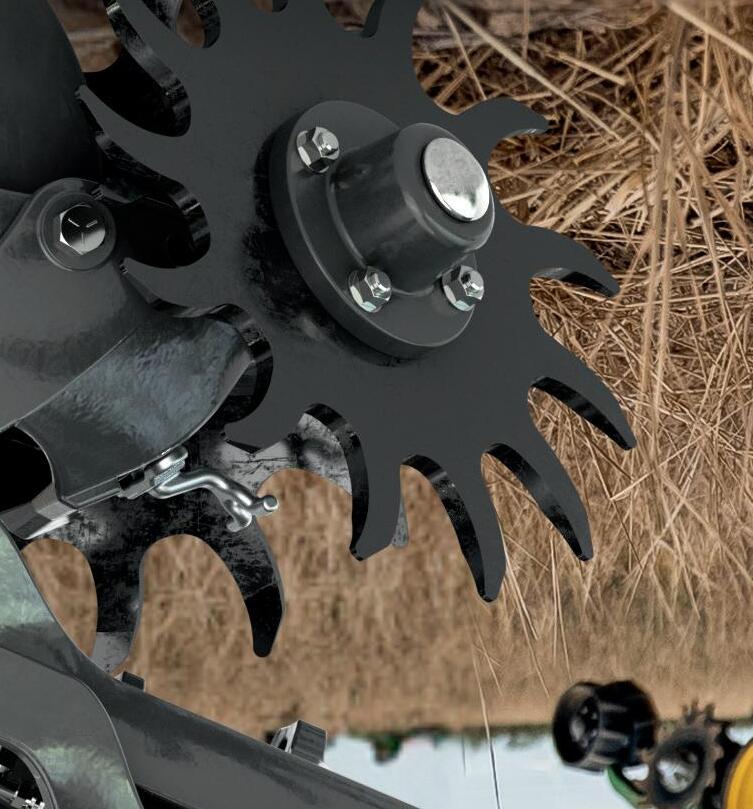
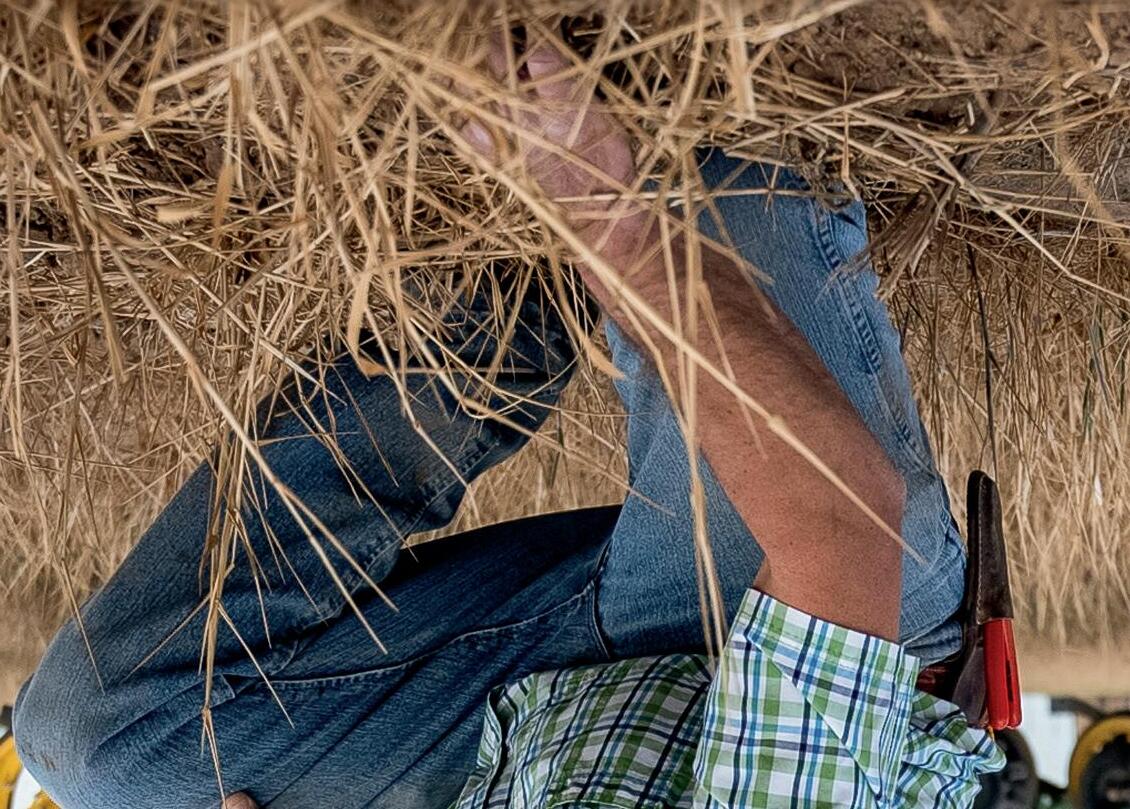

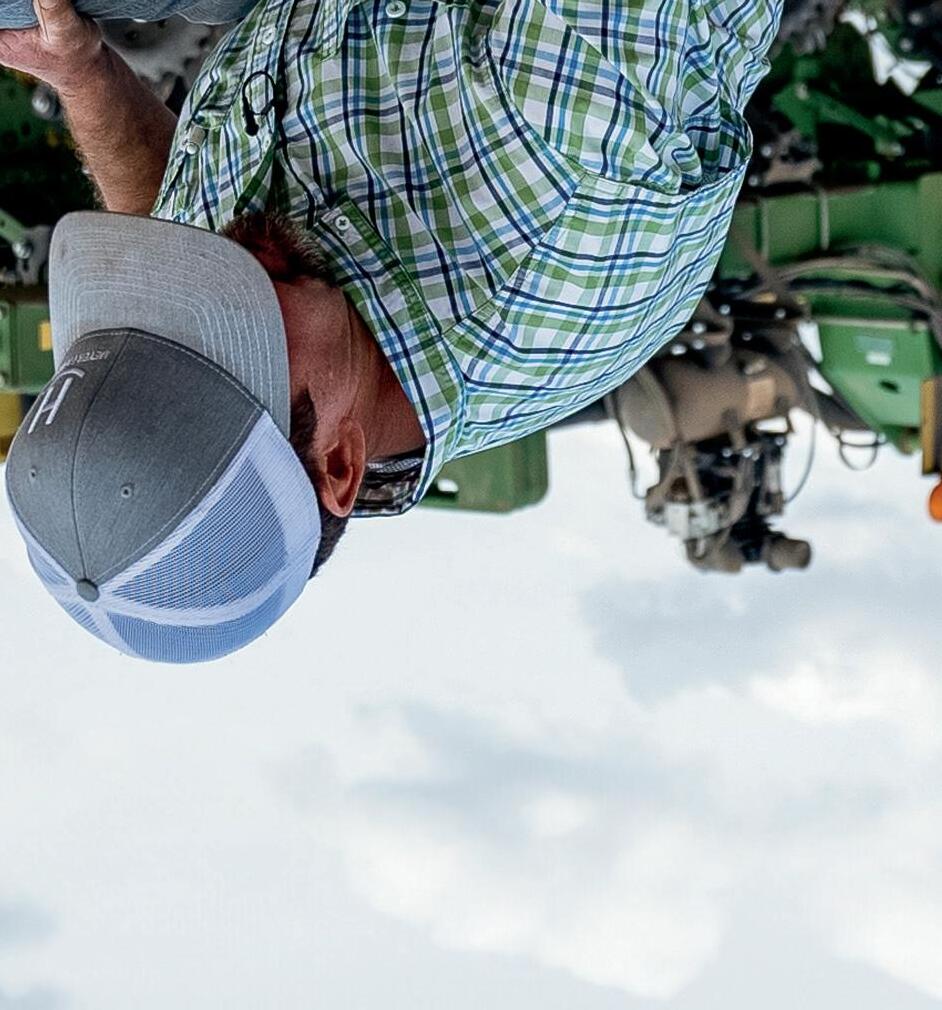
Have you heard of ttingretrofi or upgrading your planter but you’re just not sure it’s worth it? Join thousands of other farmers who have added Reveal and experience what it’s like to move your row cleaners off of the row unit, improve your row unit ride, and keep your row cleaners engaged without bouncing. The easiest way for you to try Precision Planting this year is by purchasing one row of Reveal. WE CHALLENGE YOU TO PUT ONE ROW OF REVEAL® ON YOUR PLANTER THIS YEAR. WE BELIEVE IN BETTER PLANTERS WITH BETTER ROW CLEANERS.

Hint: Rotate this ad to reveal one of the best places to start.
Reveal®, and Precision Planting® are registered trademarks of Precision Planting LLC. ©2024 Precision Planting LLC. IS IT POSSIBLE YOU’VE BEEN LOOKING AT YOUR PLANTER WRONG?
PrecisionPlanting.com



































 BY SHELLEY HEINRICH SLATON, TEXAS
BY SHELLEY HEINRICH SLATON, TEXAS


















































































